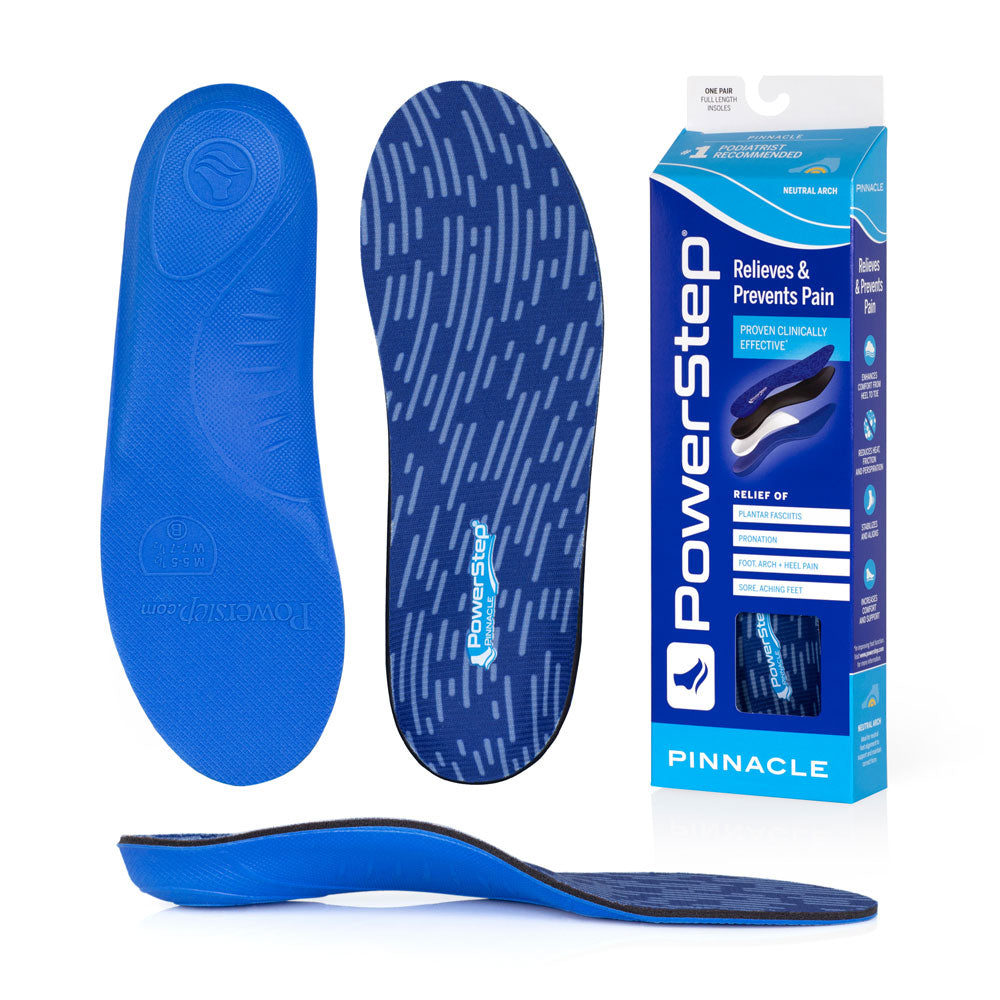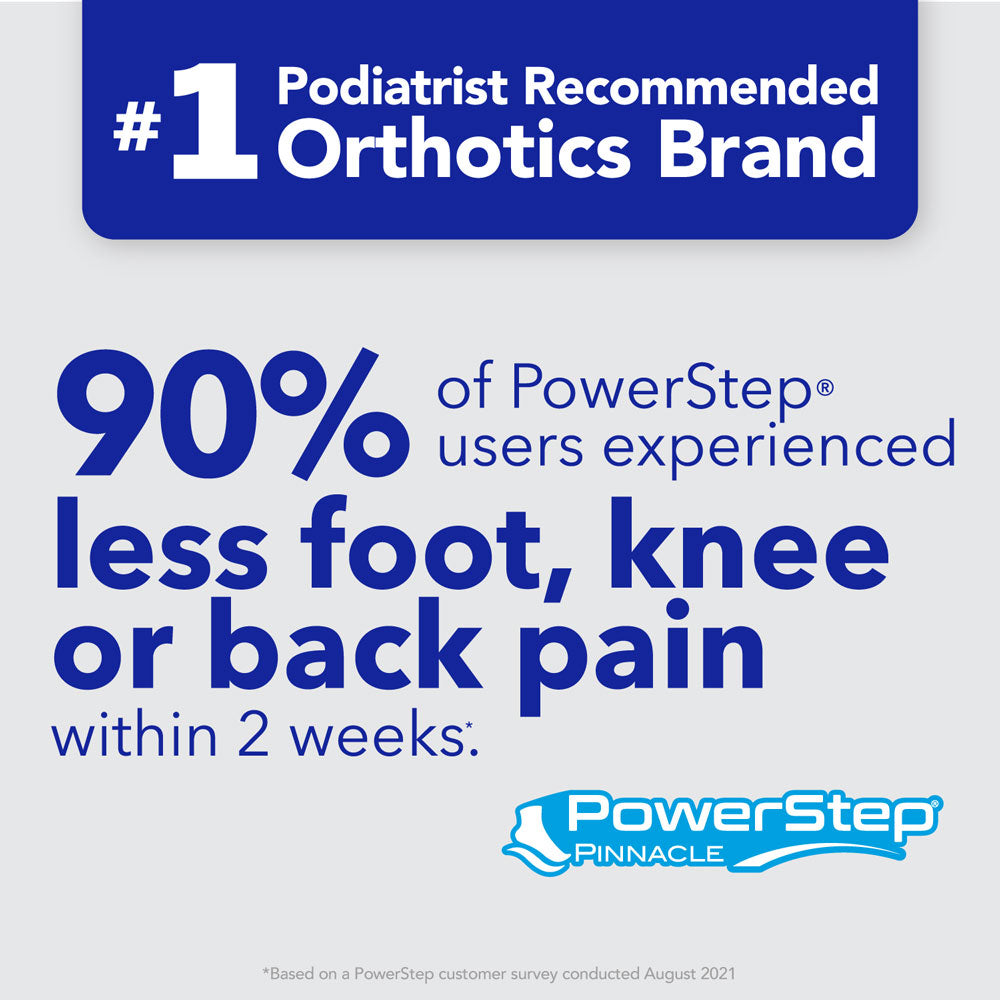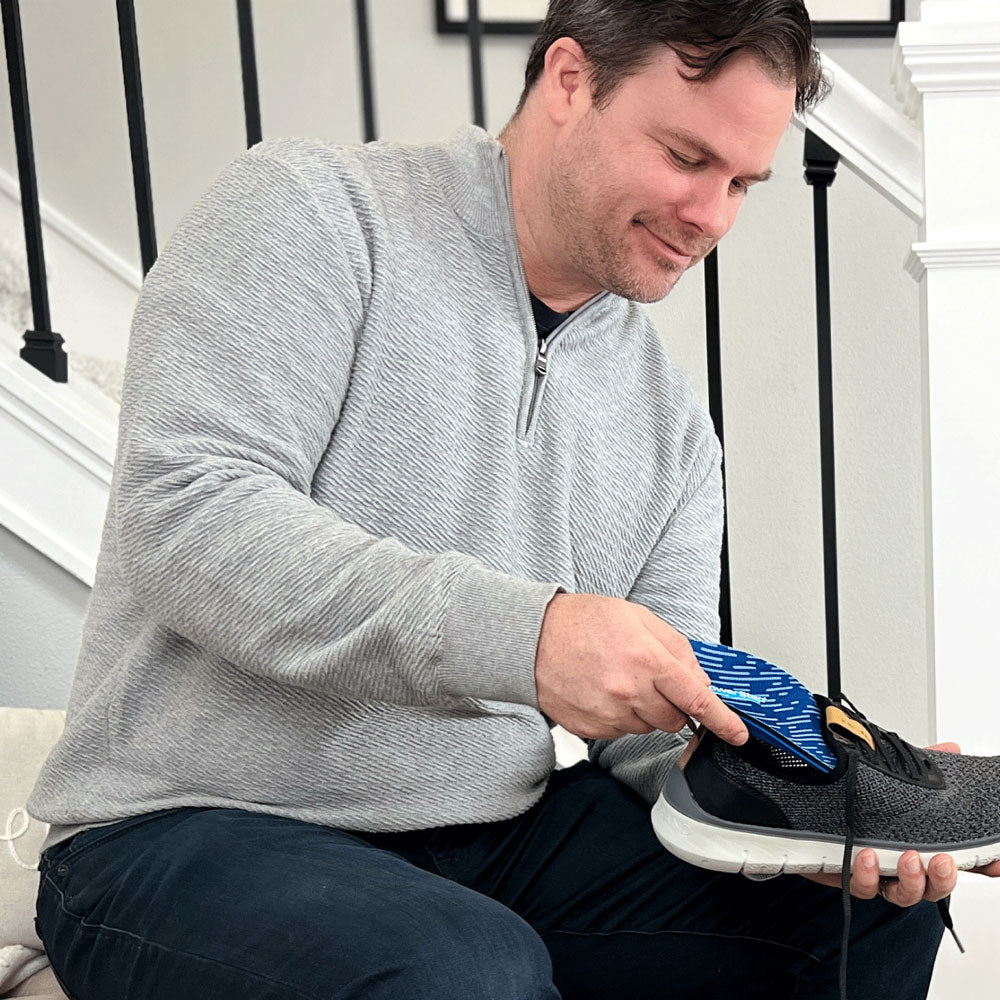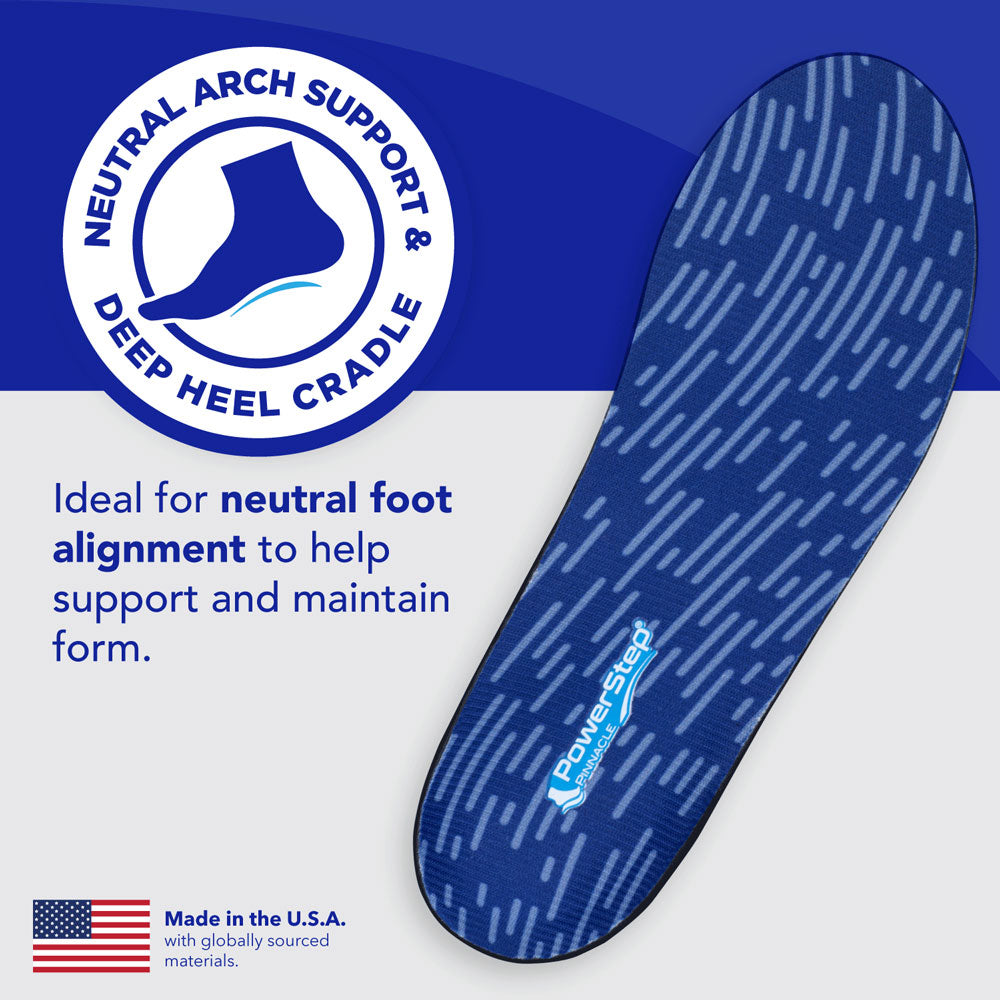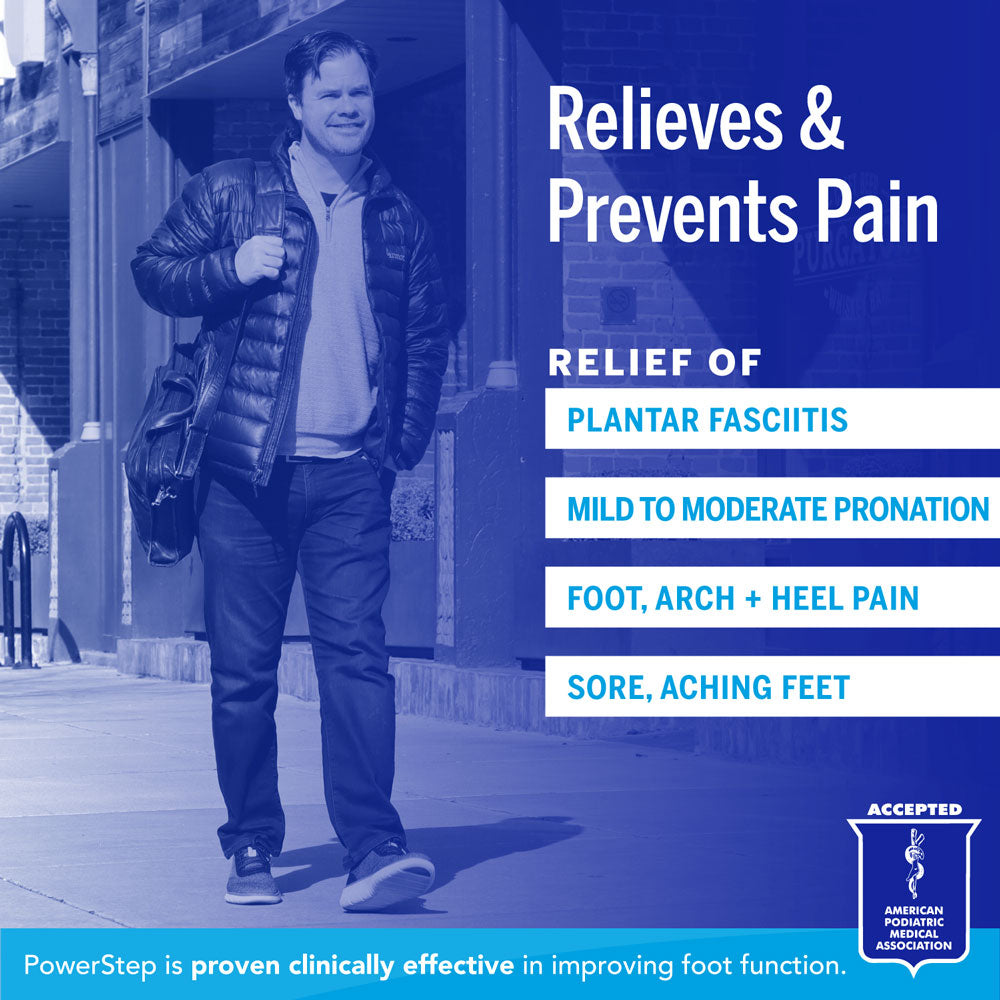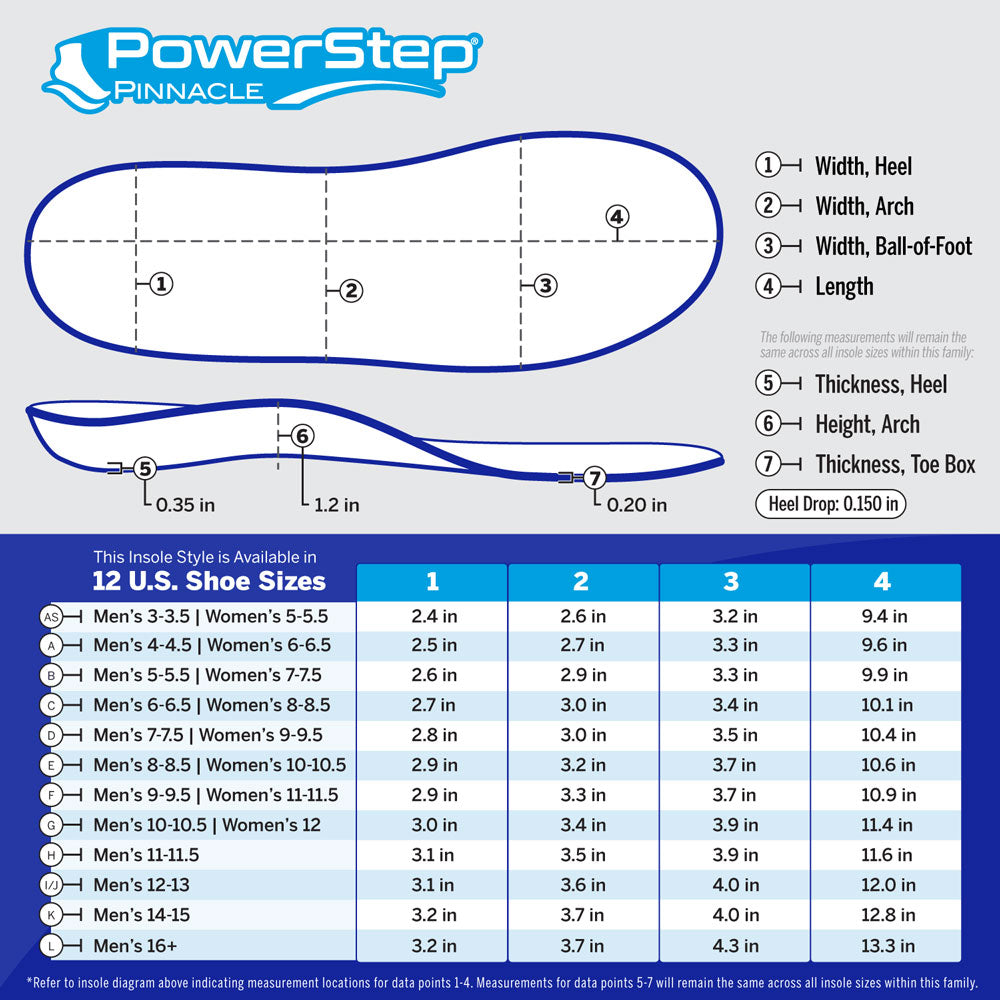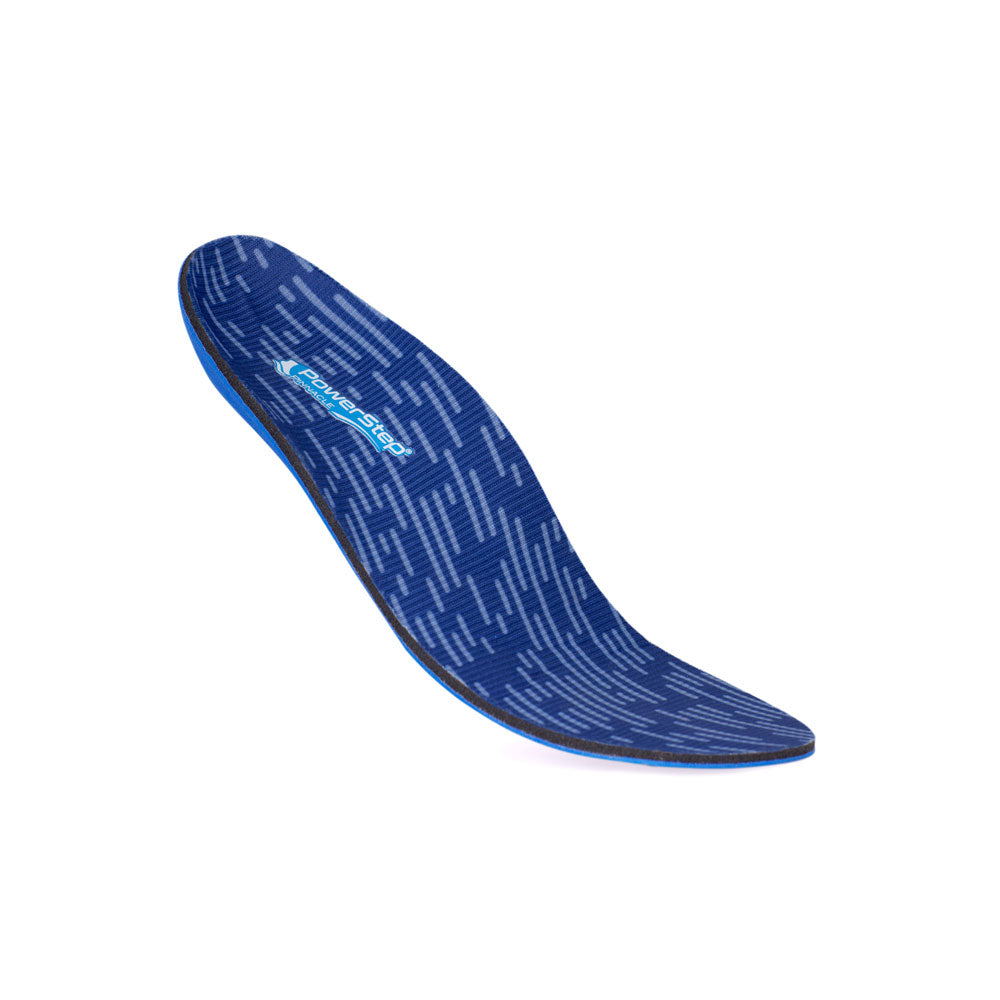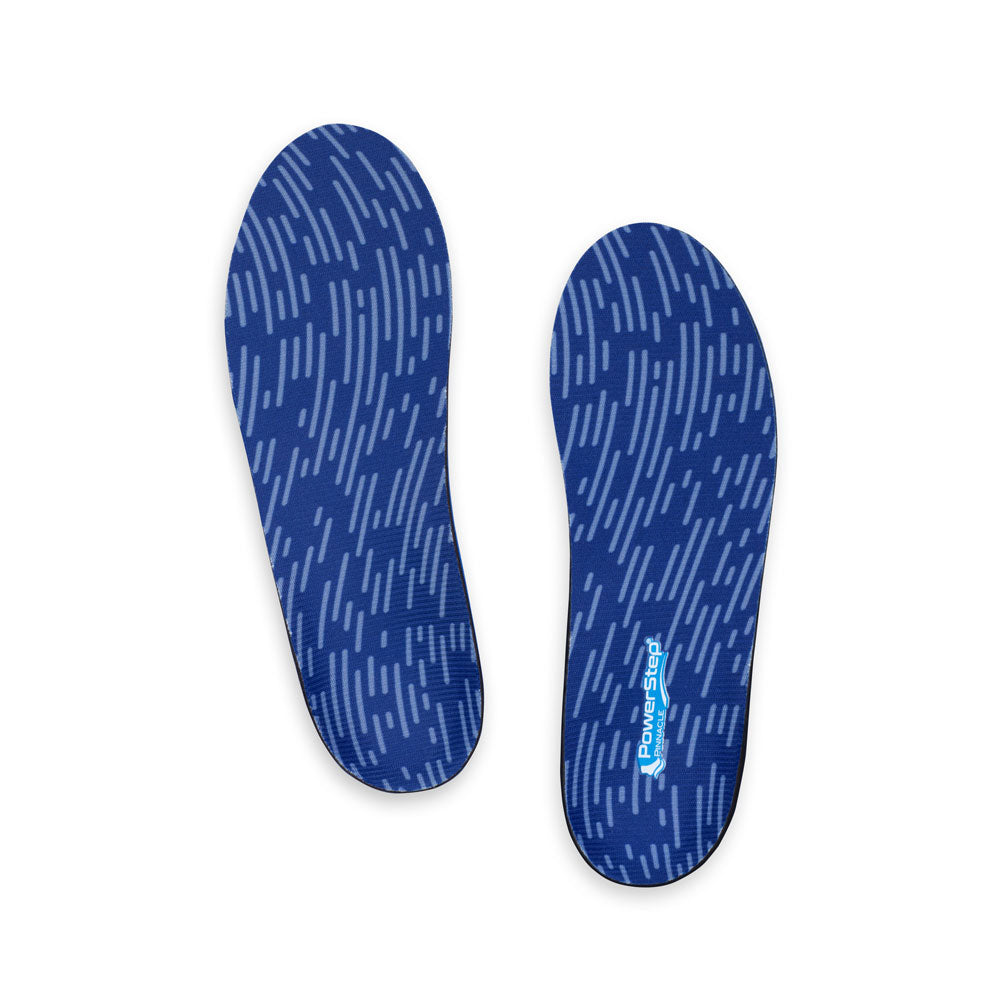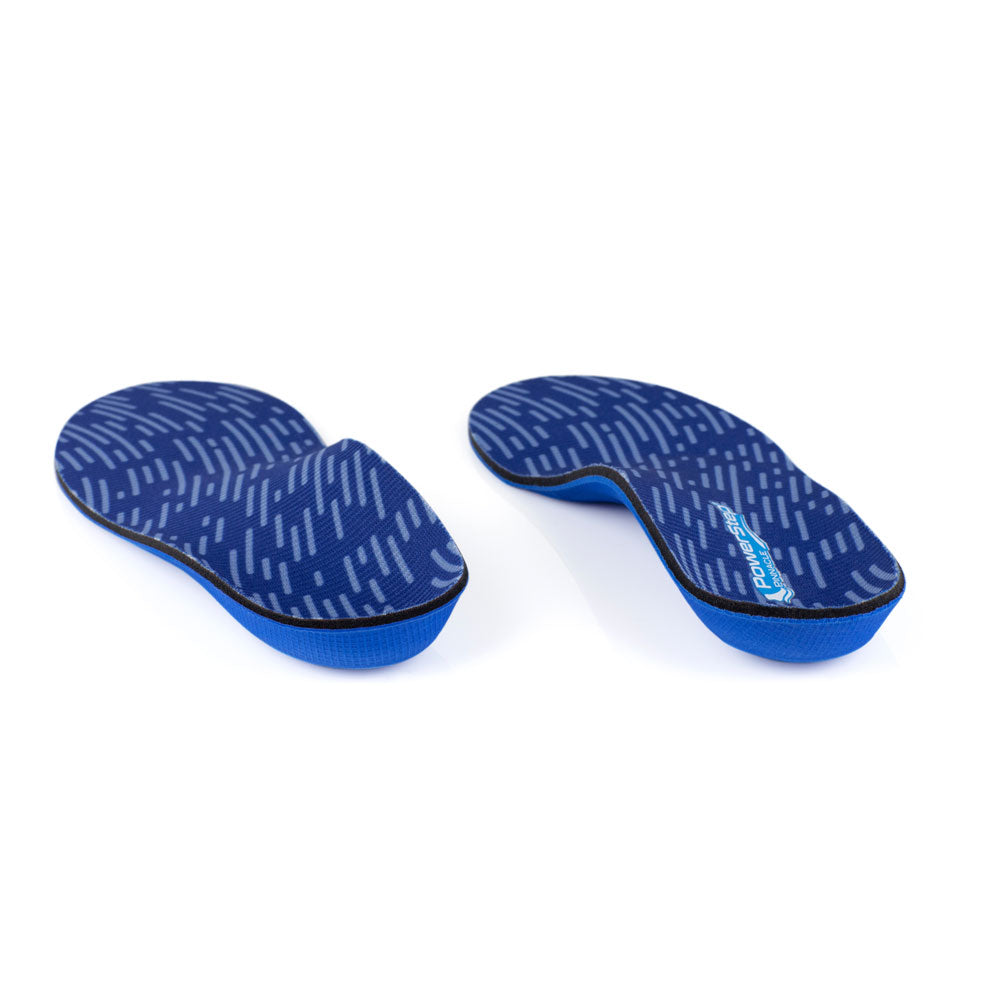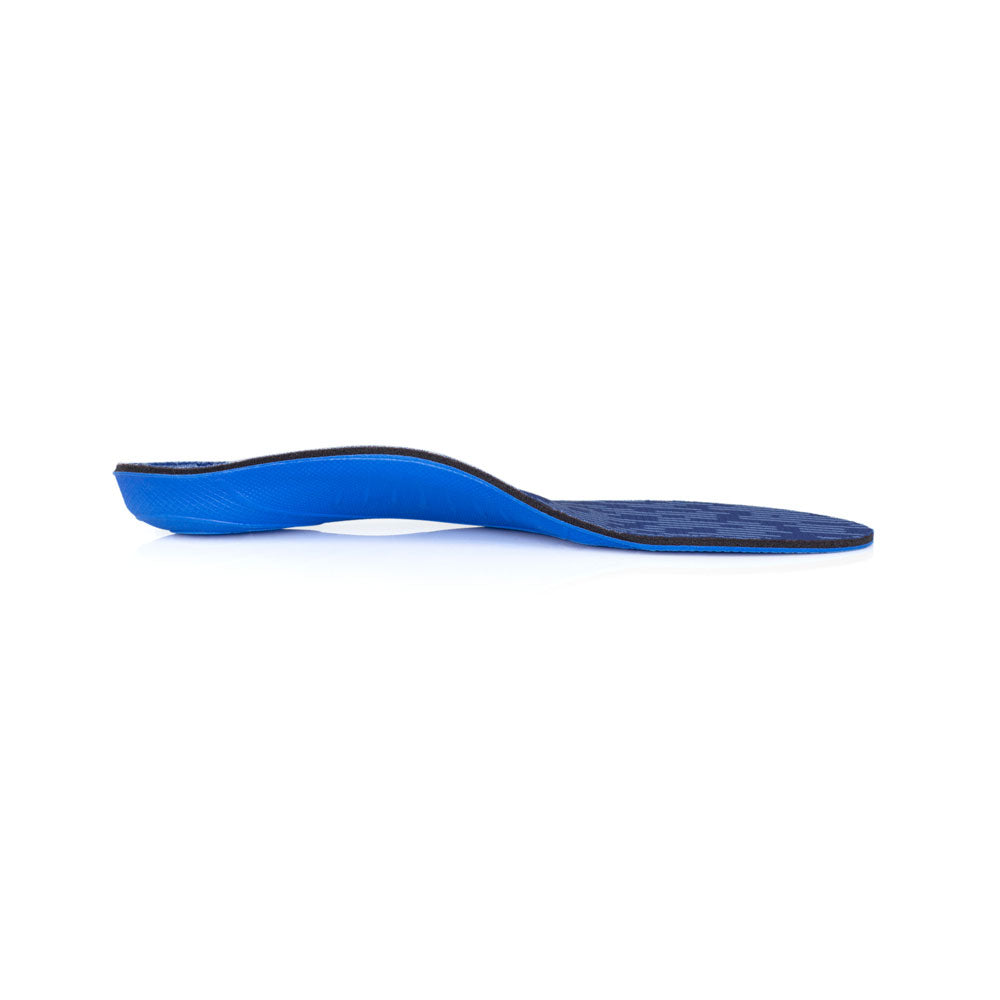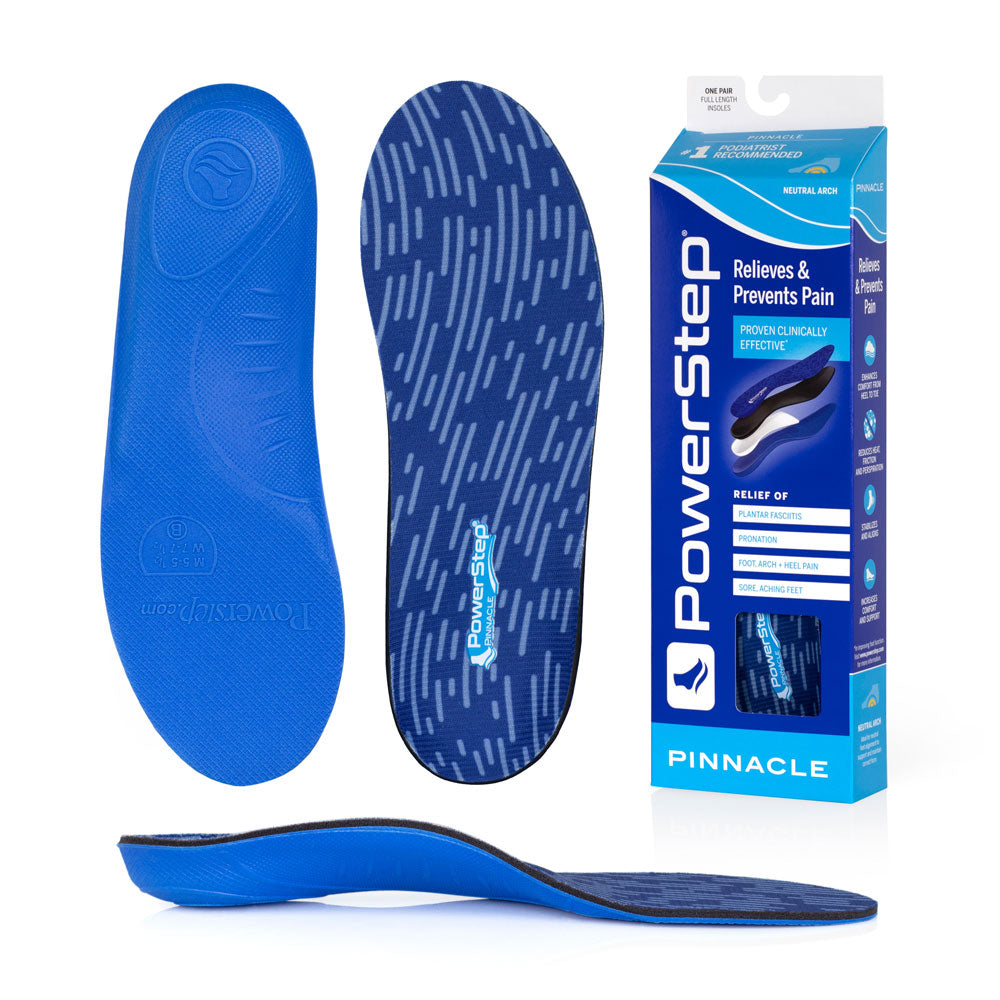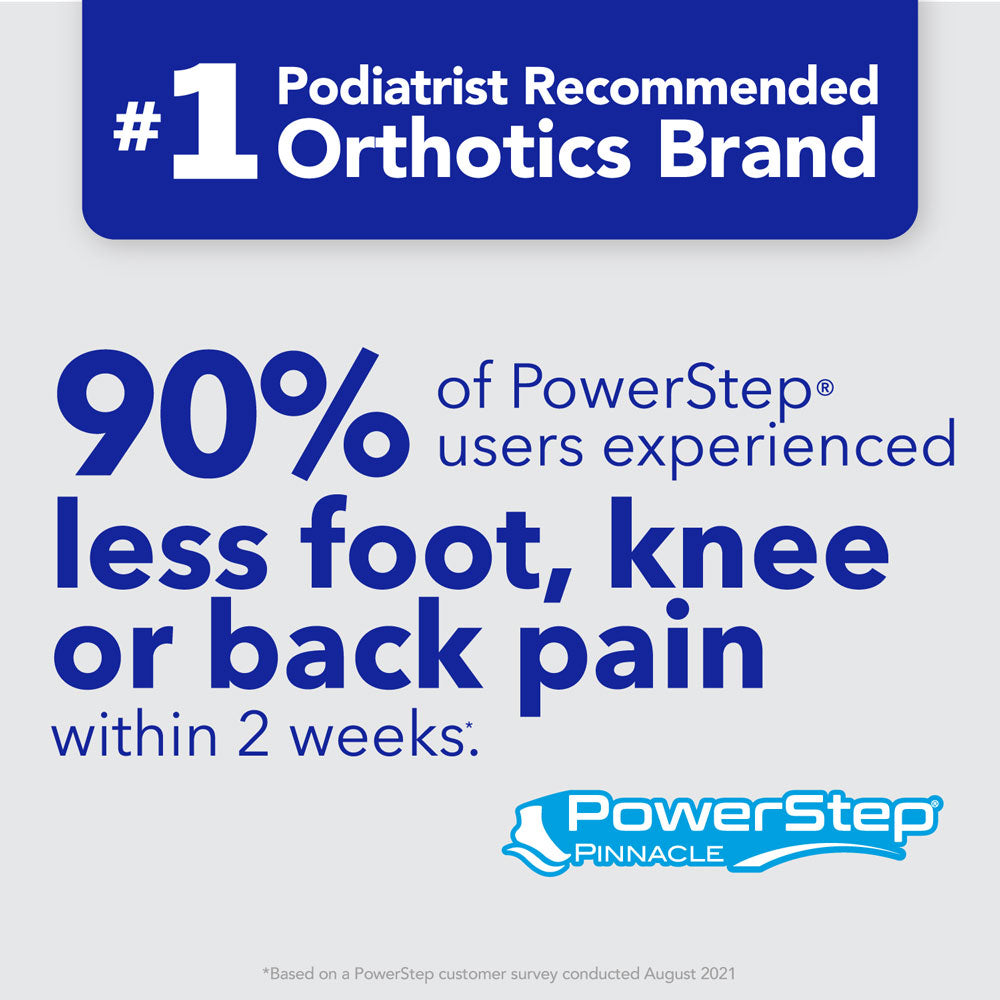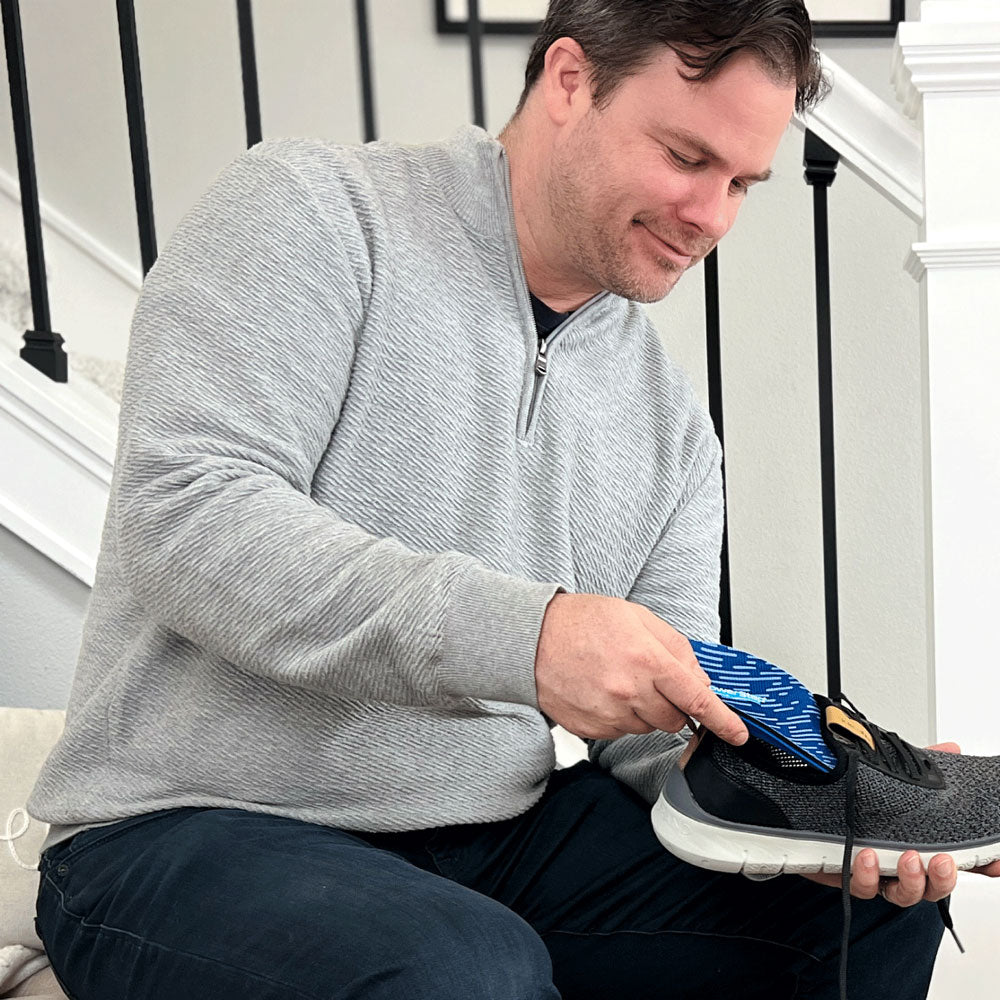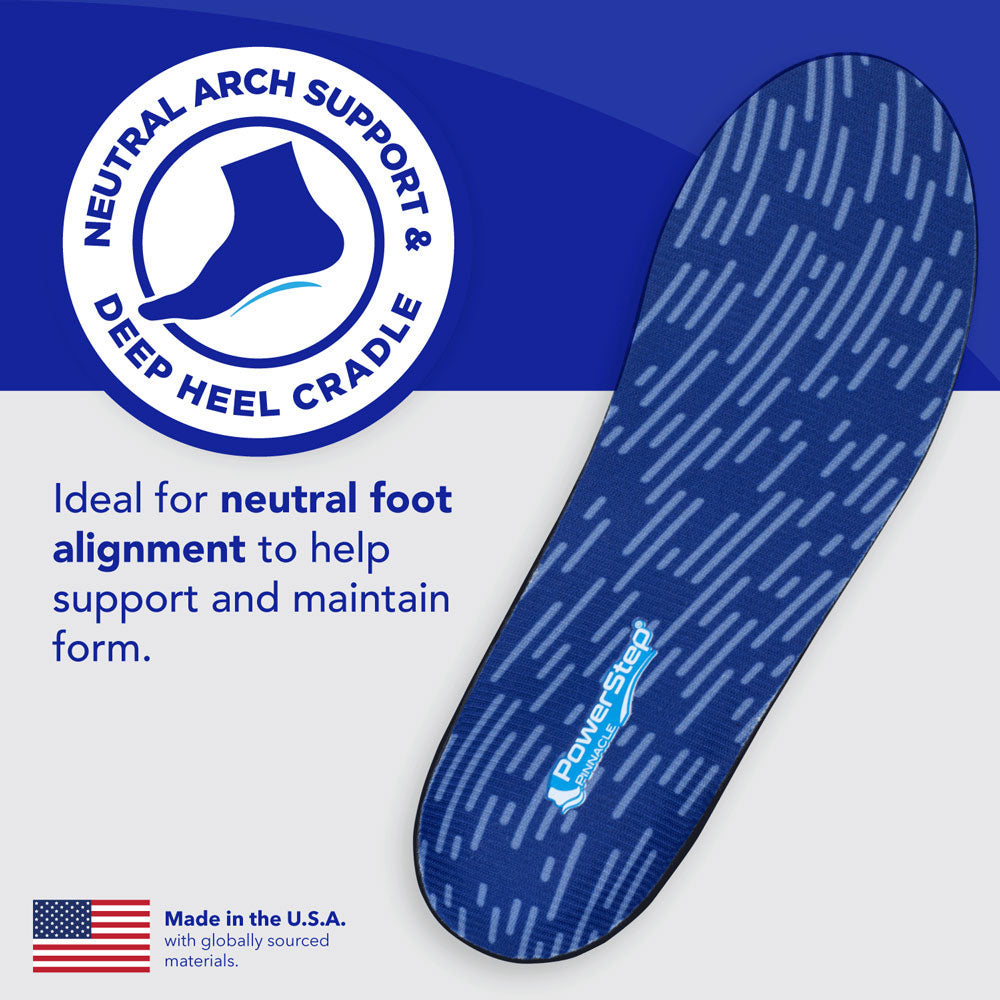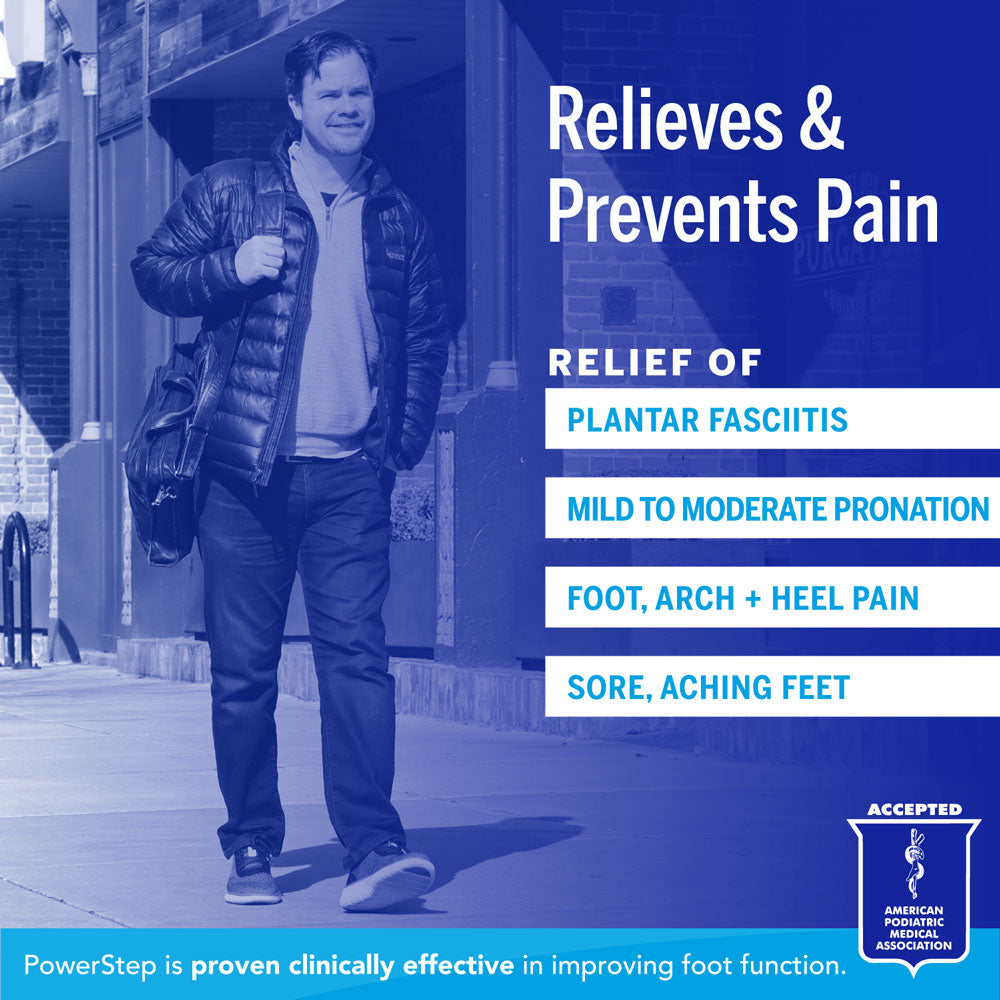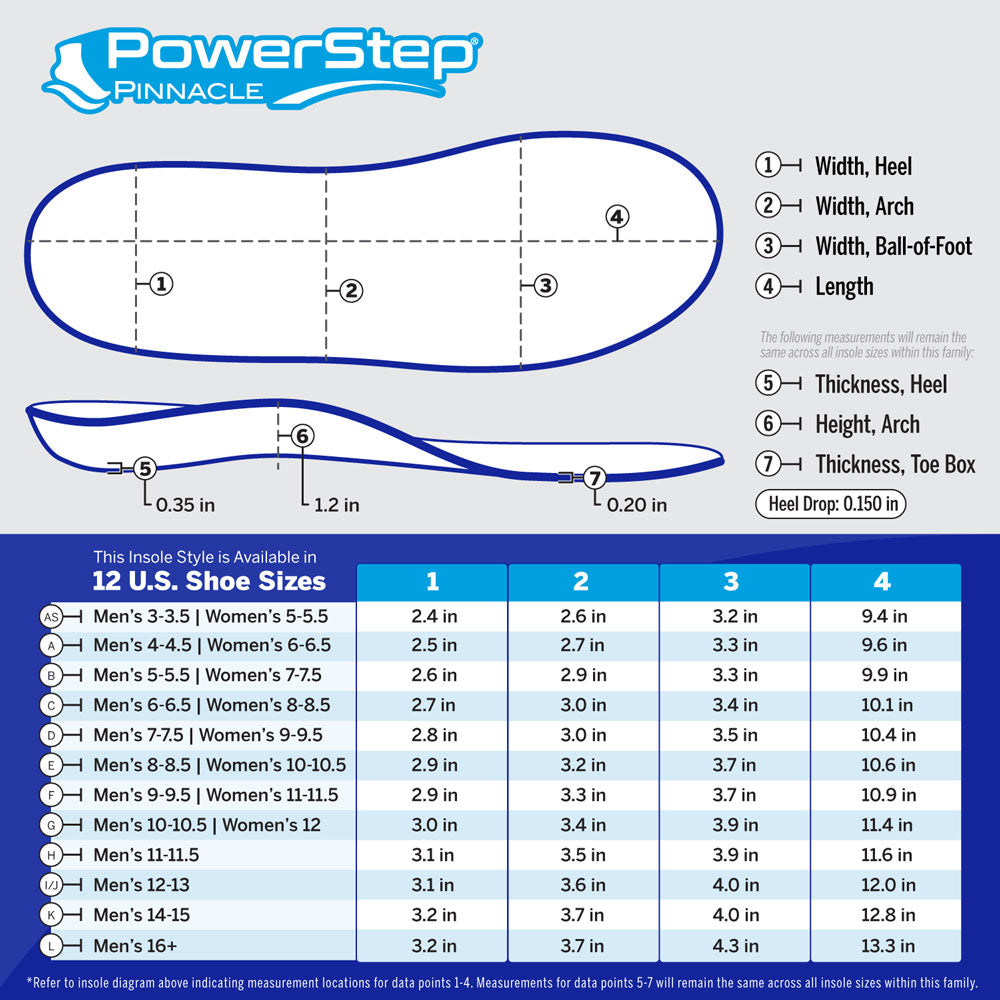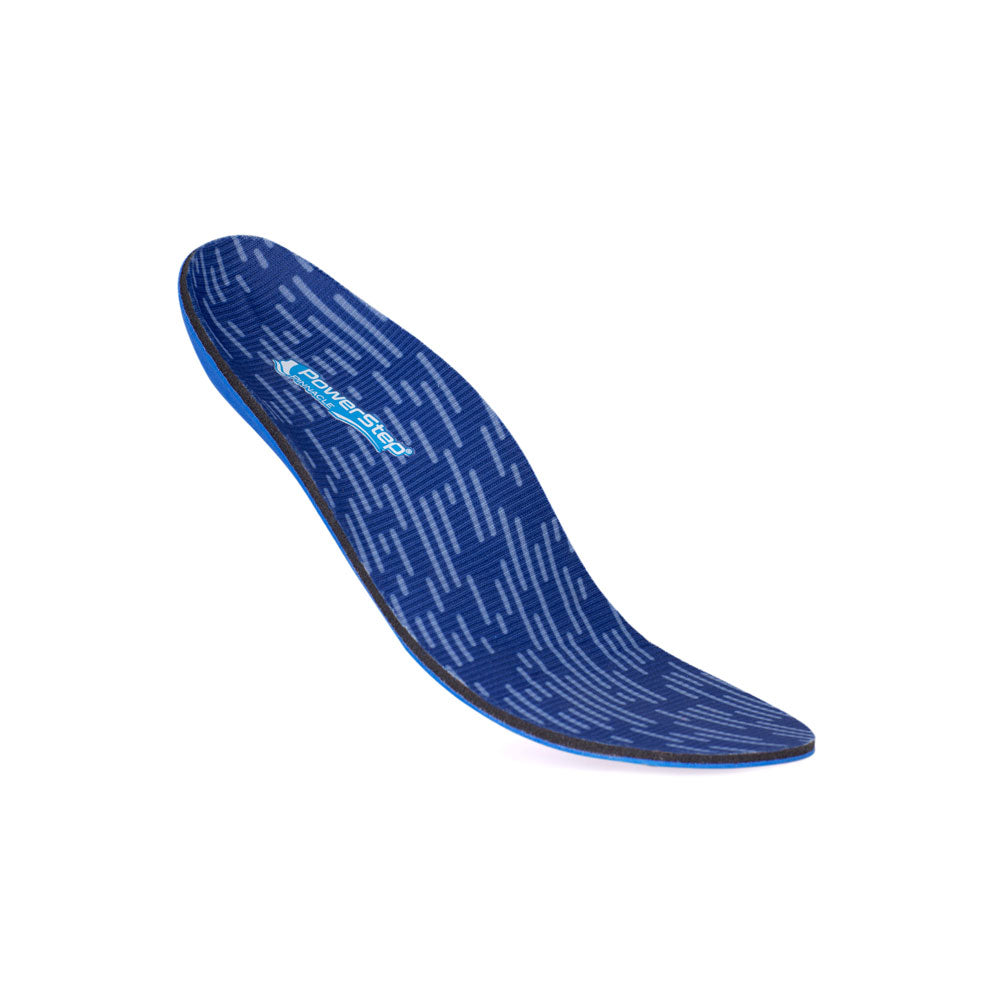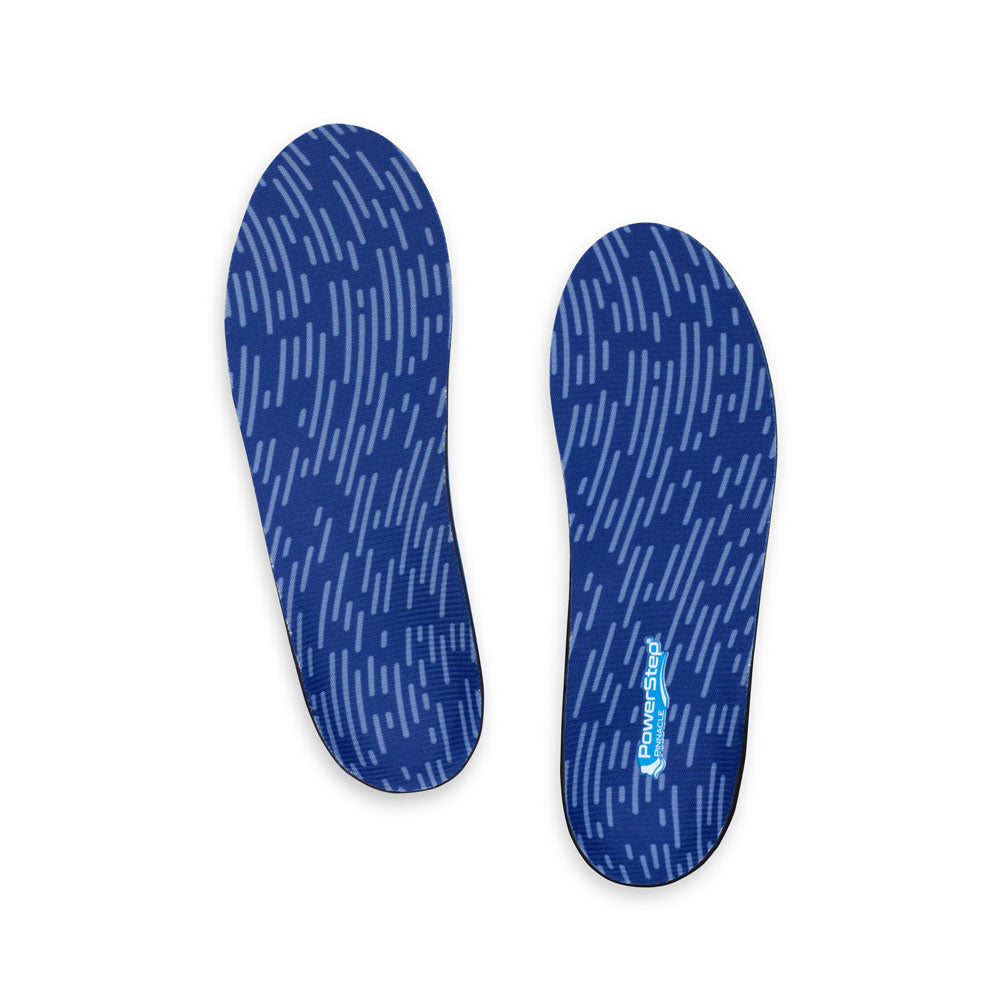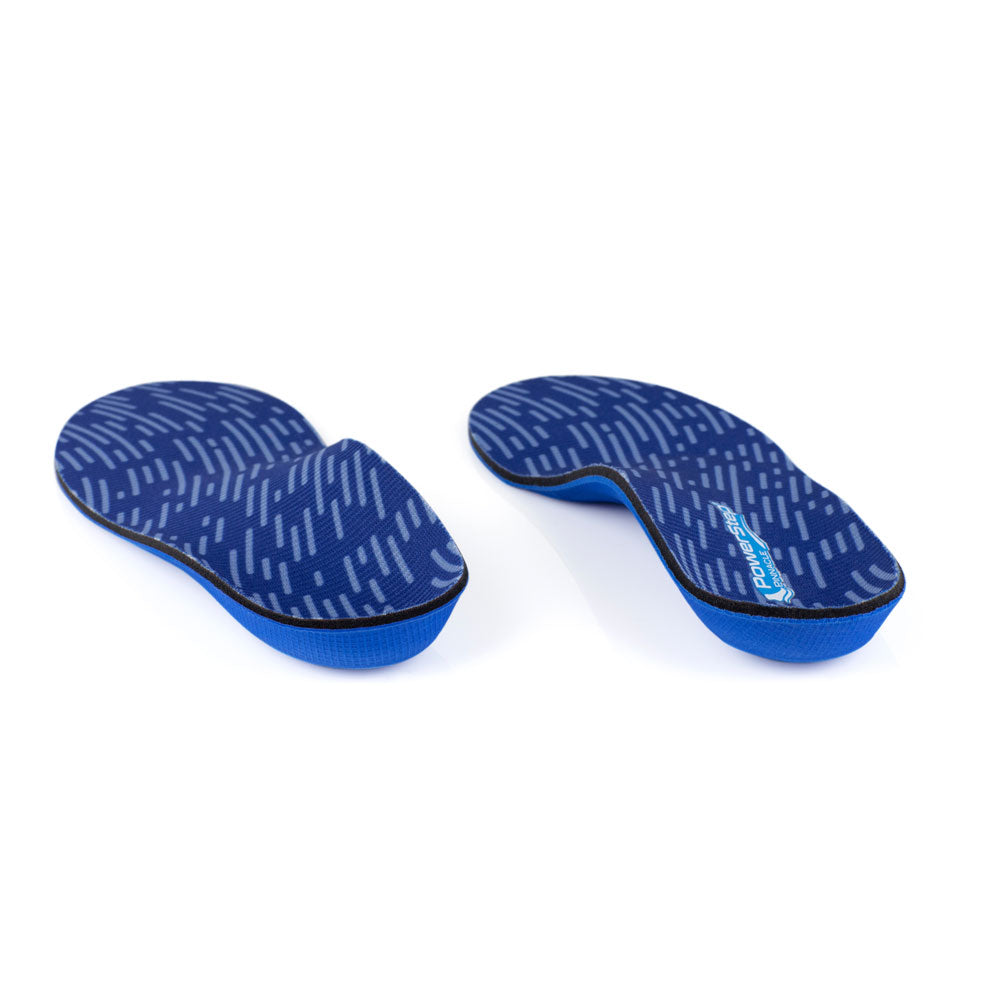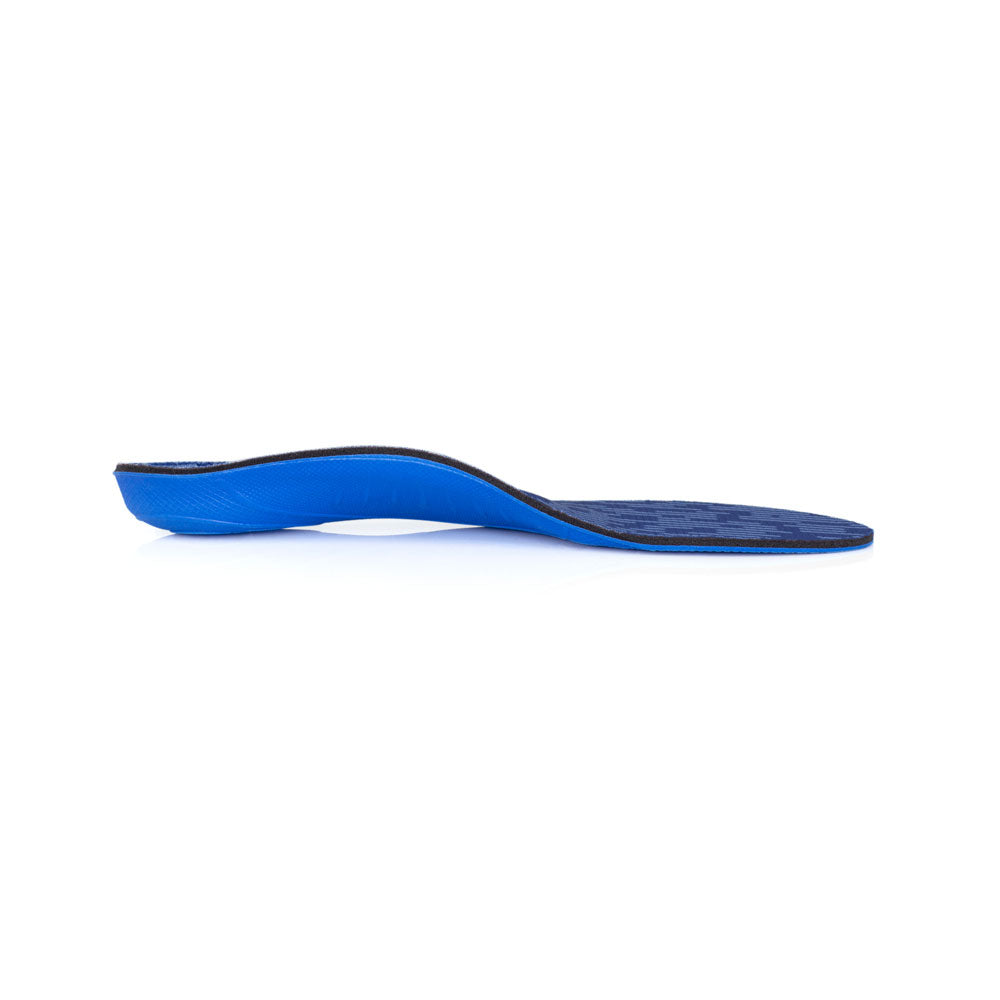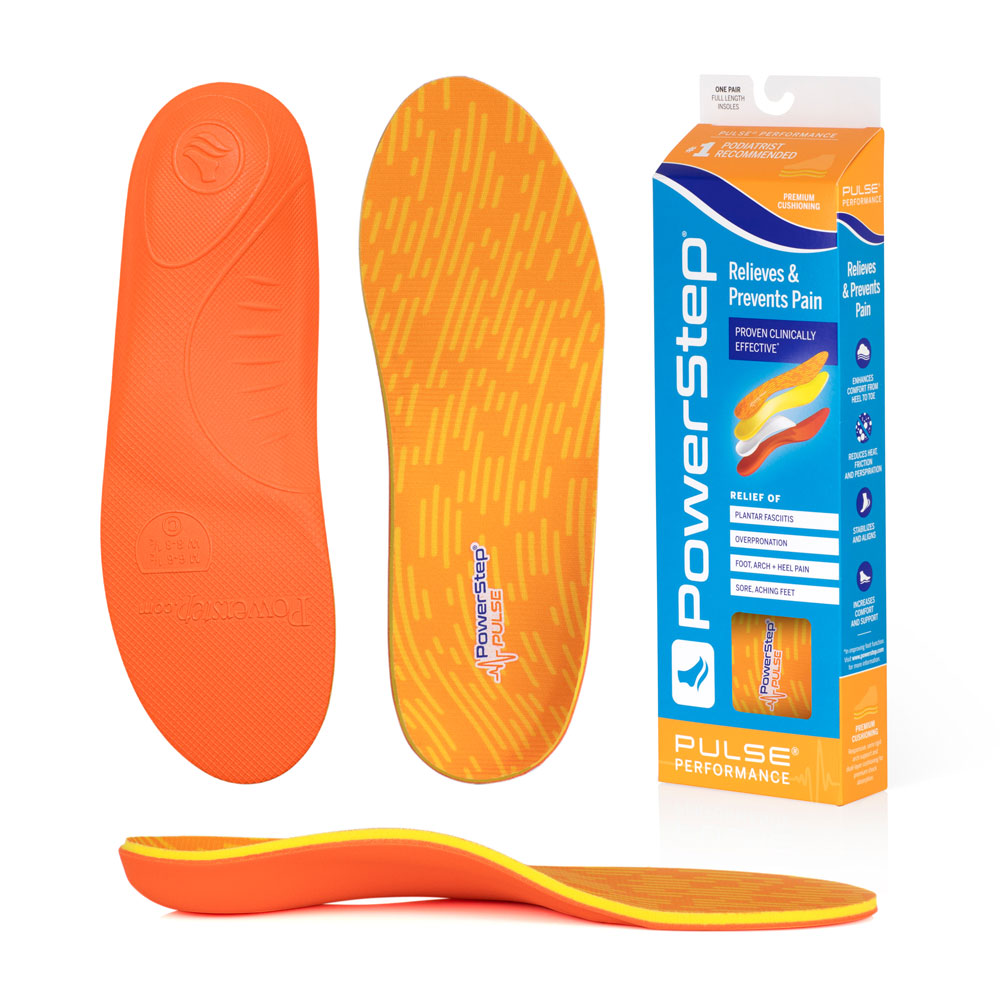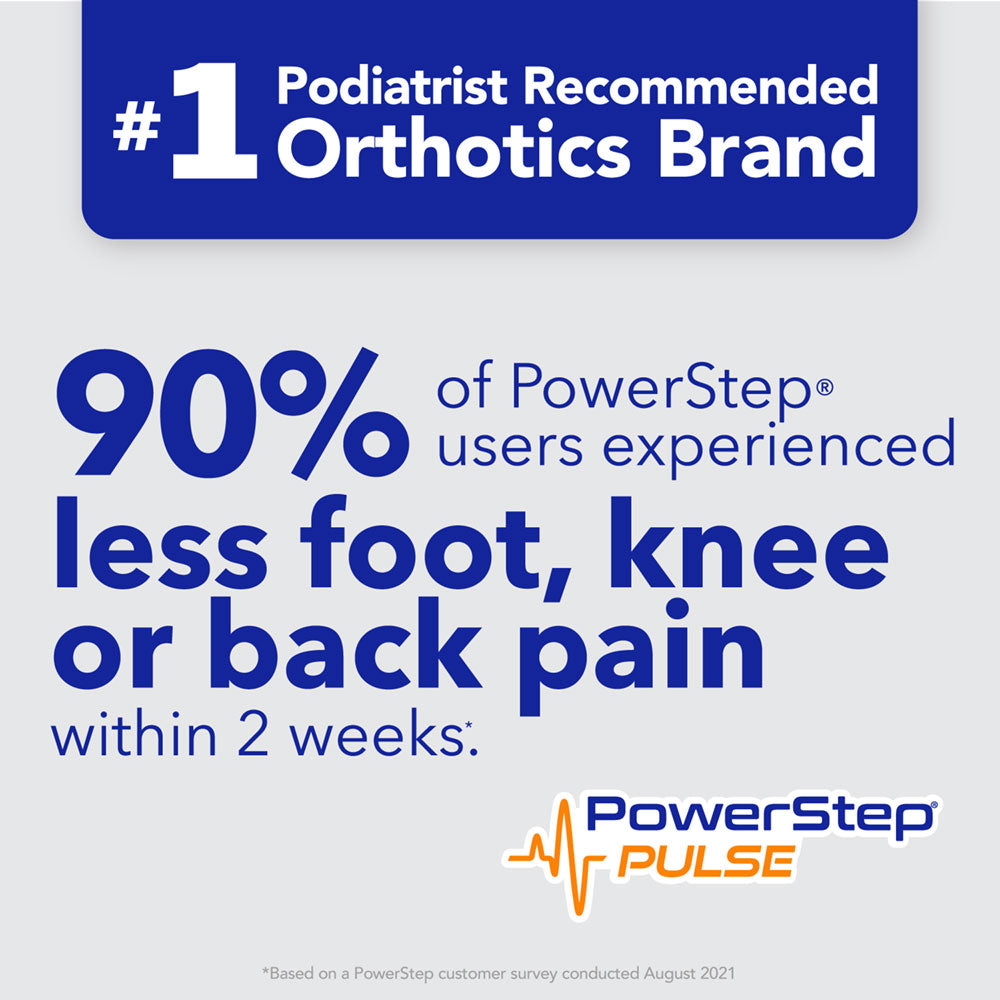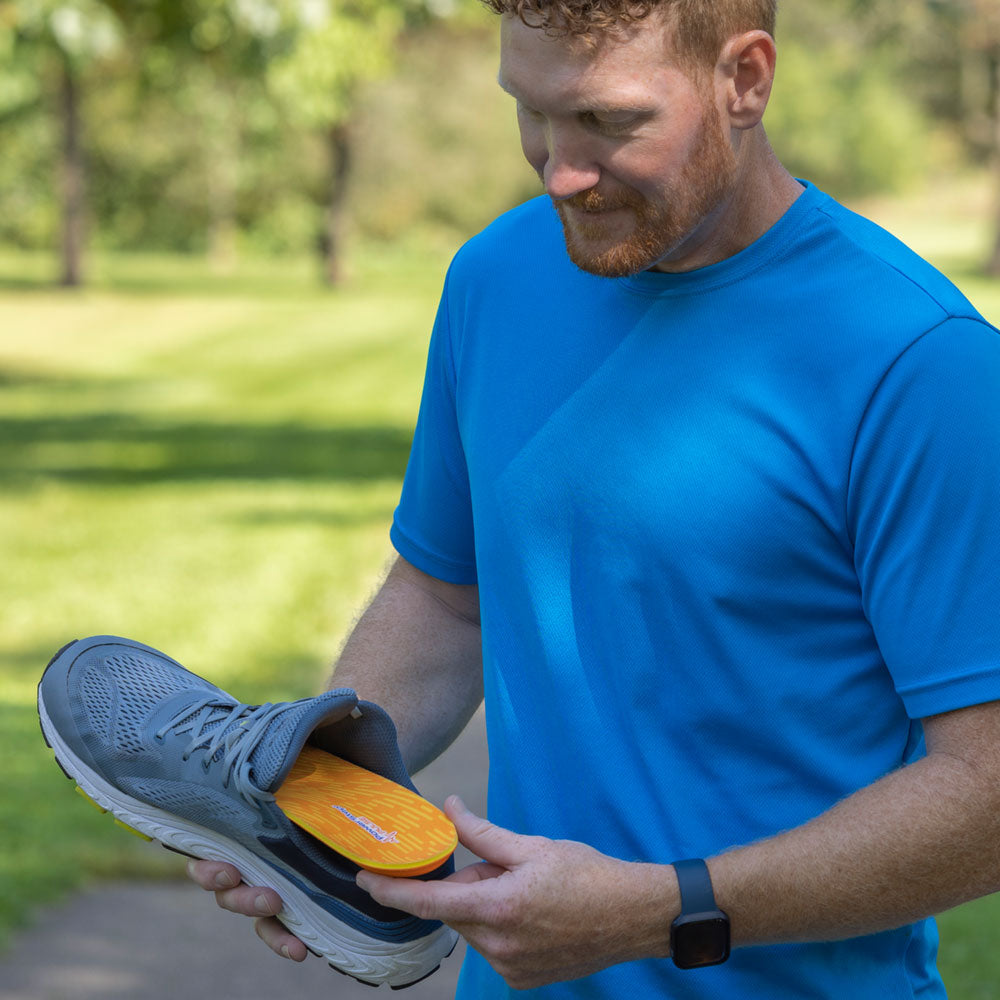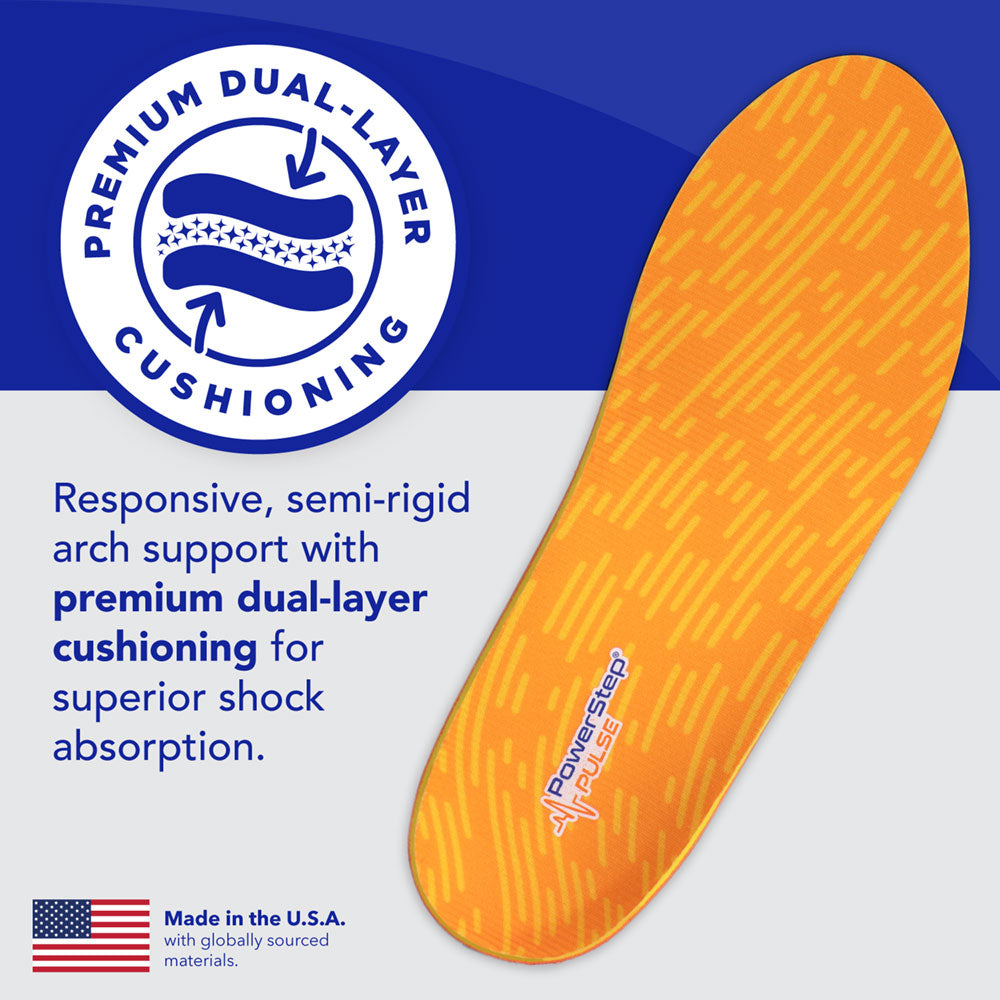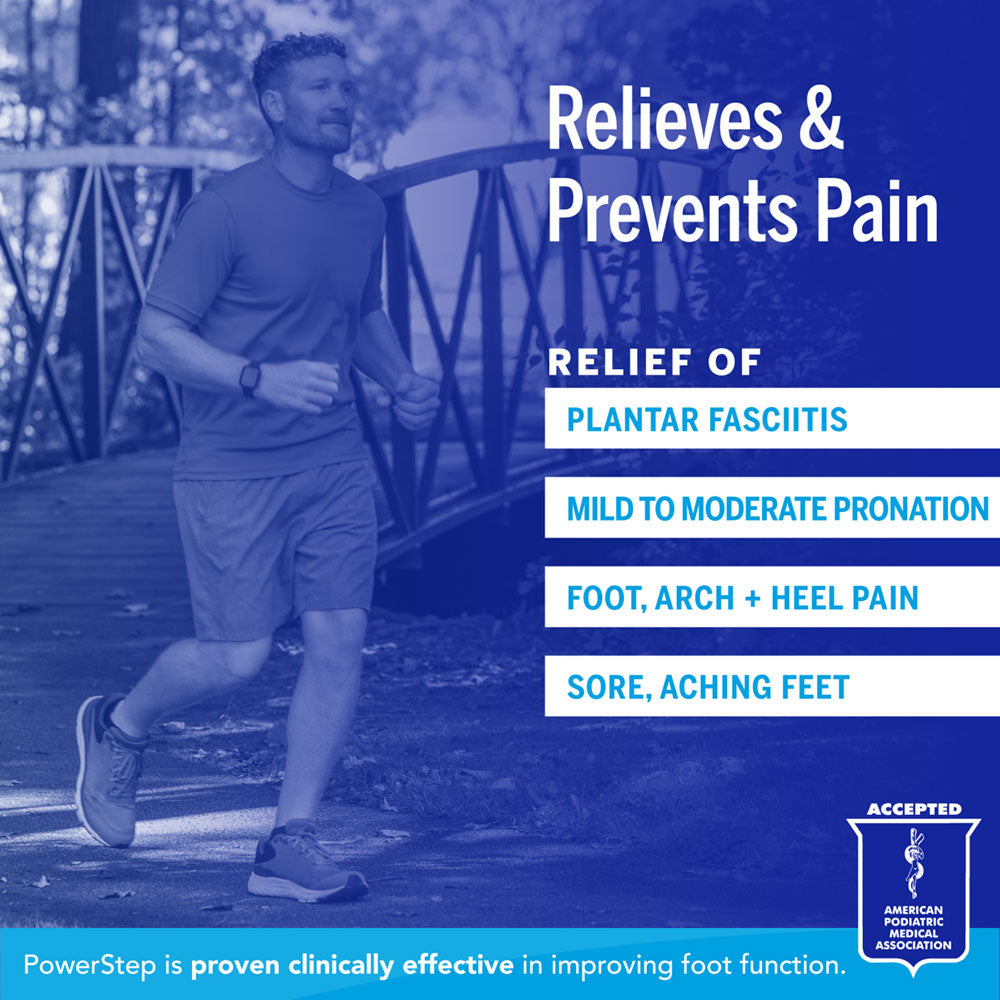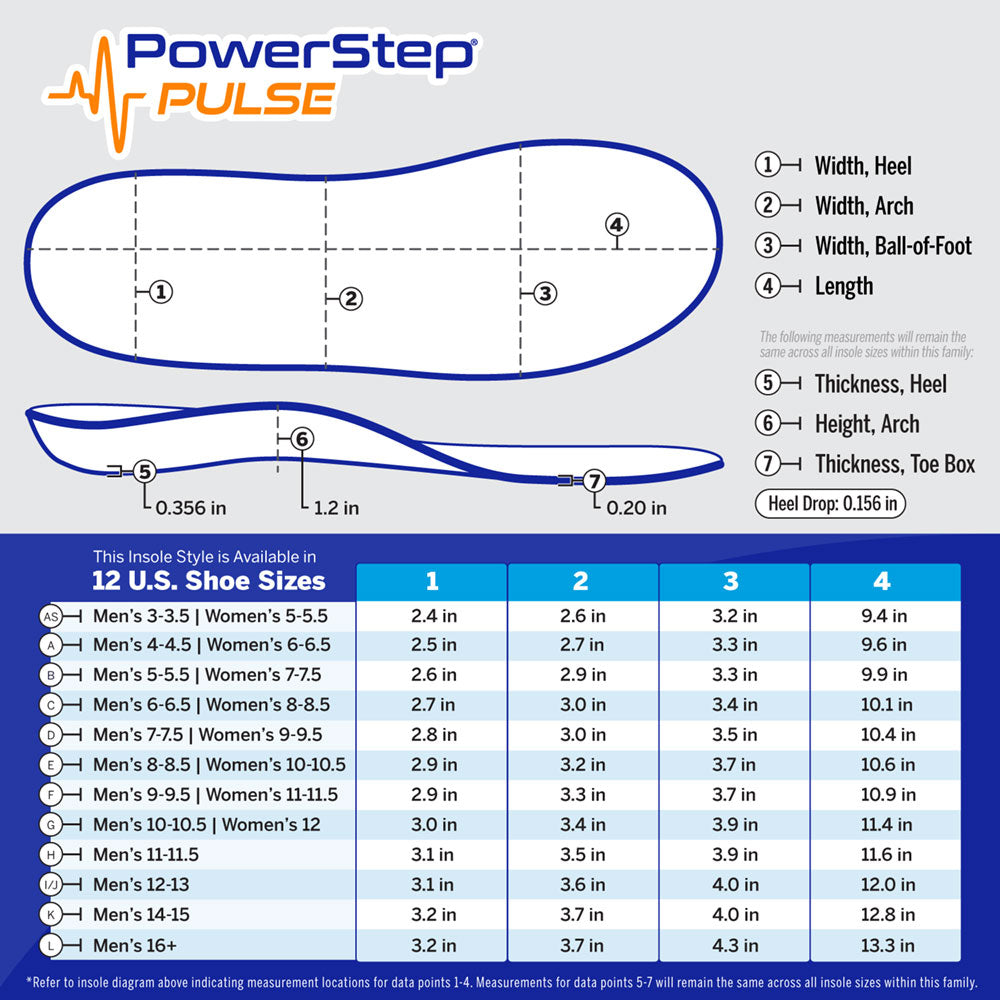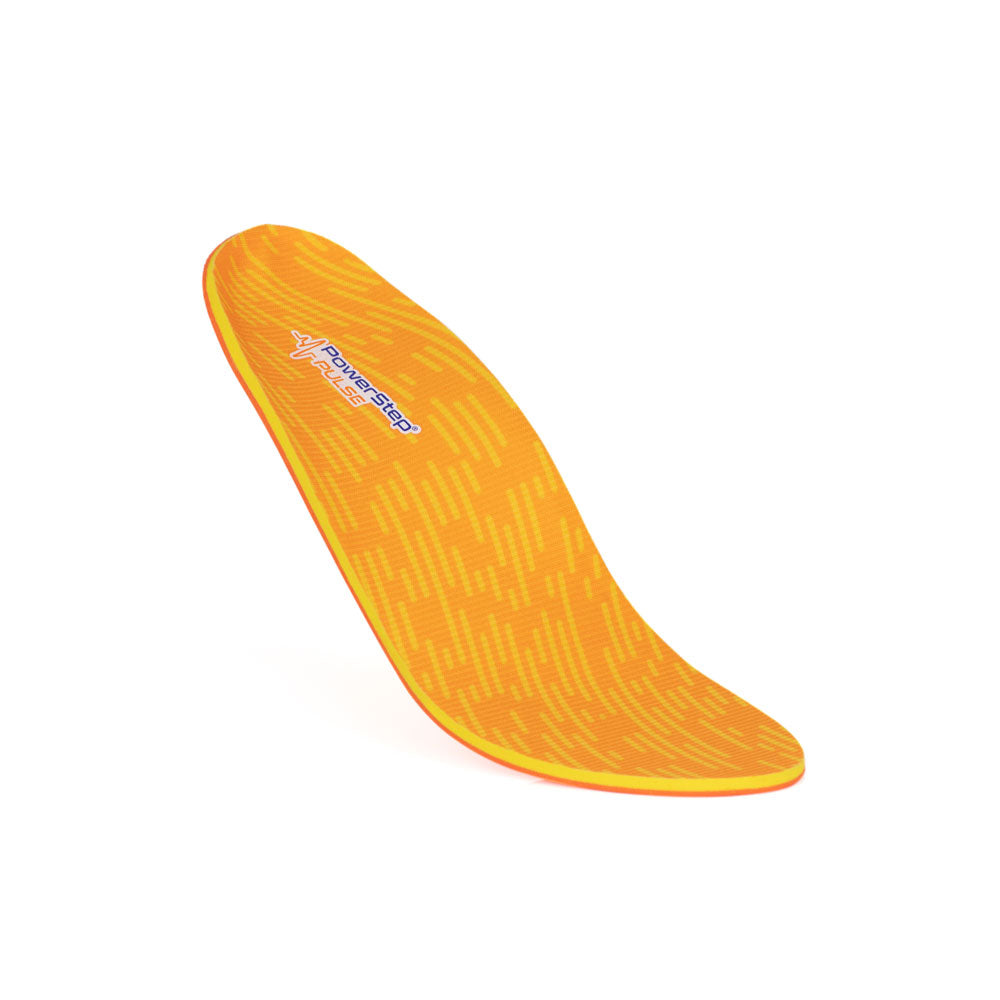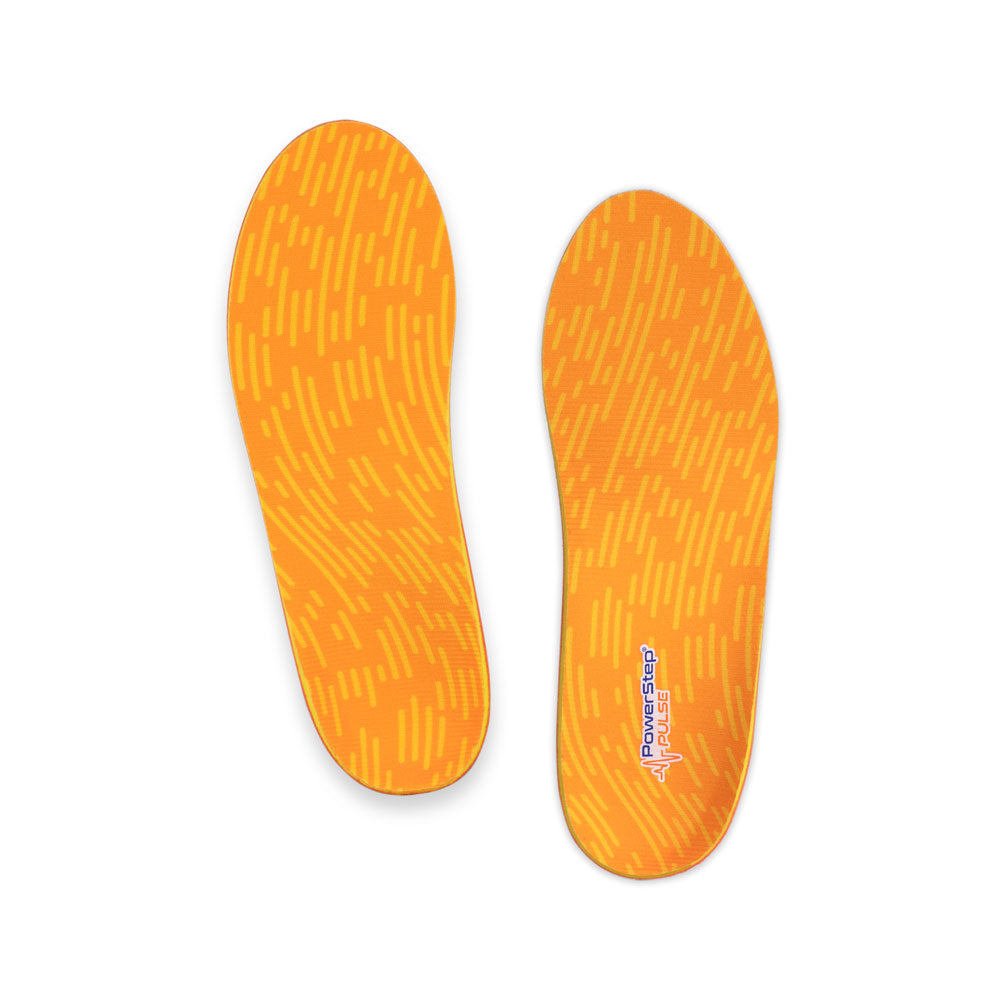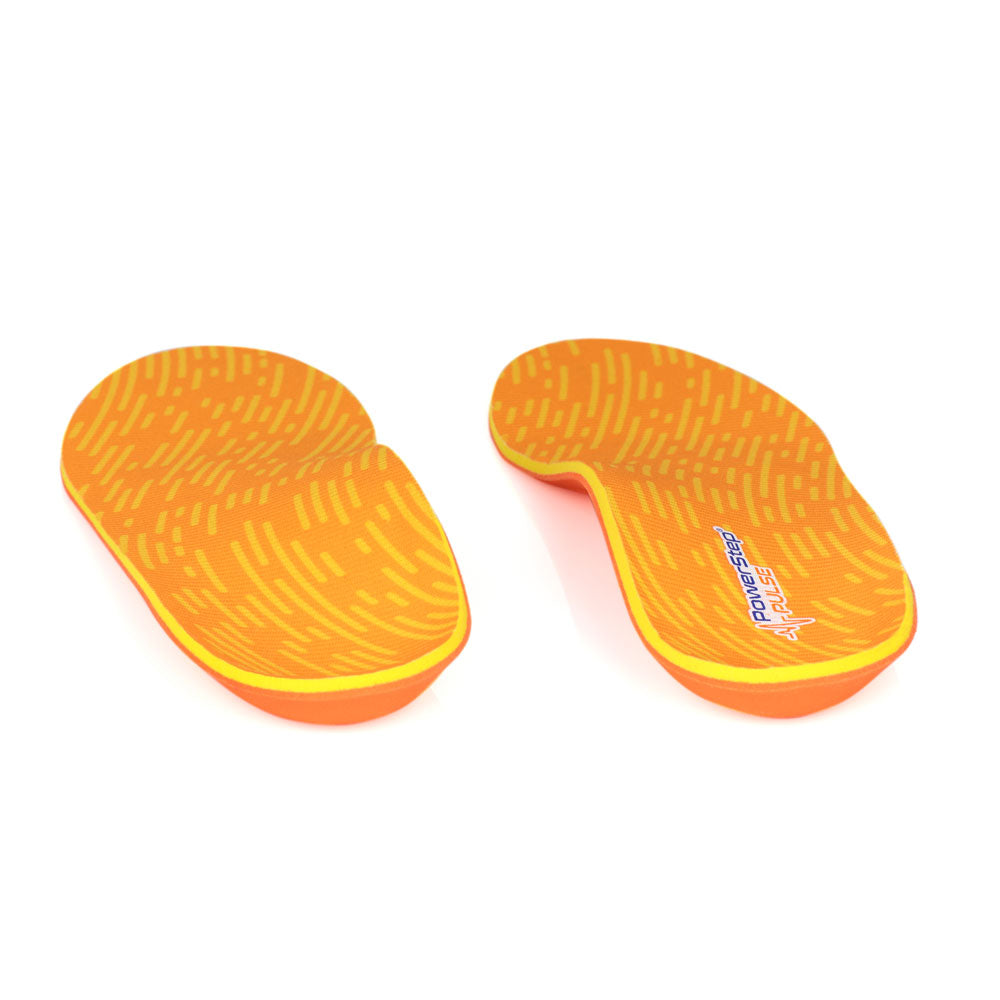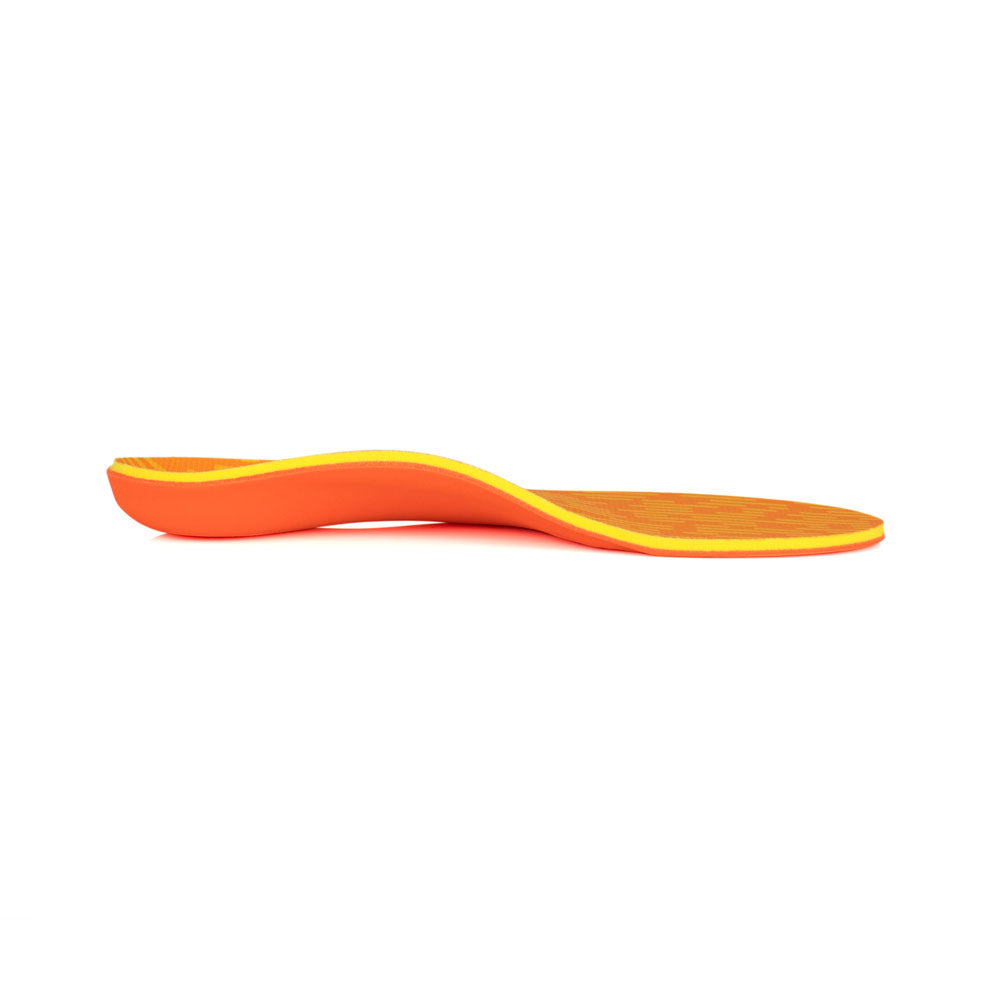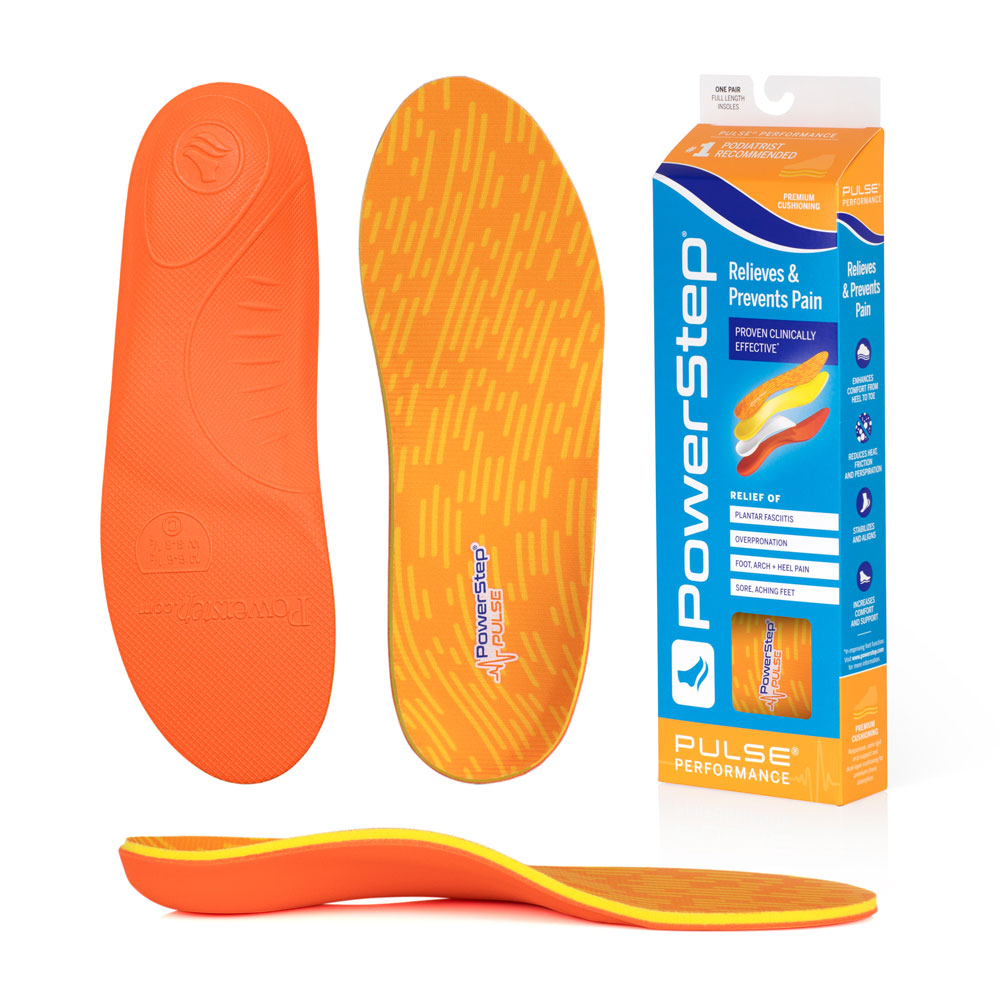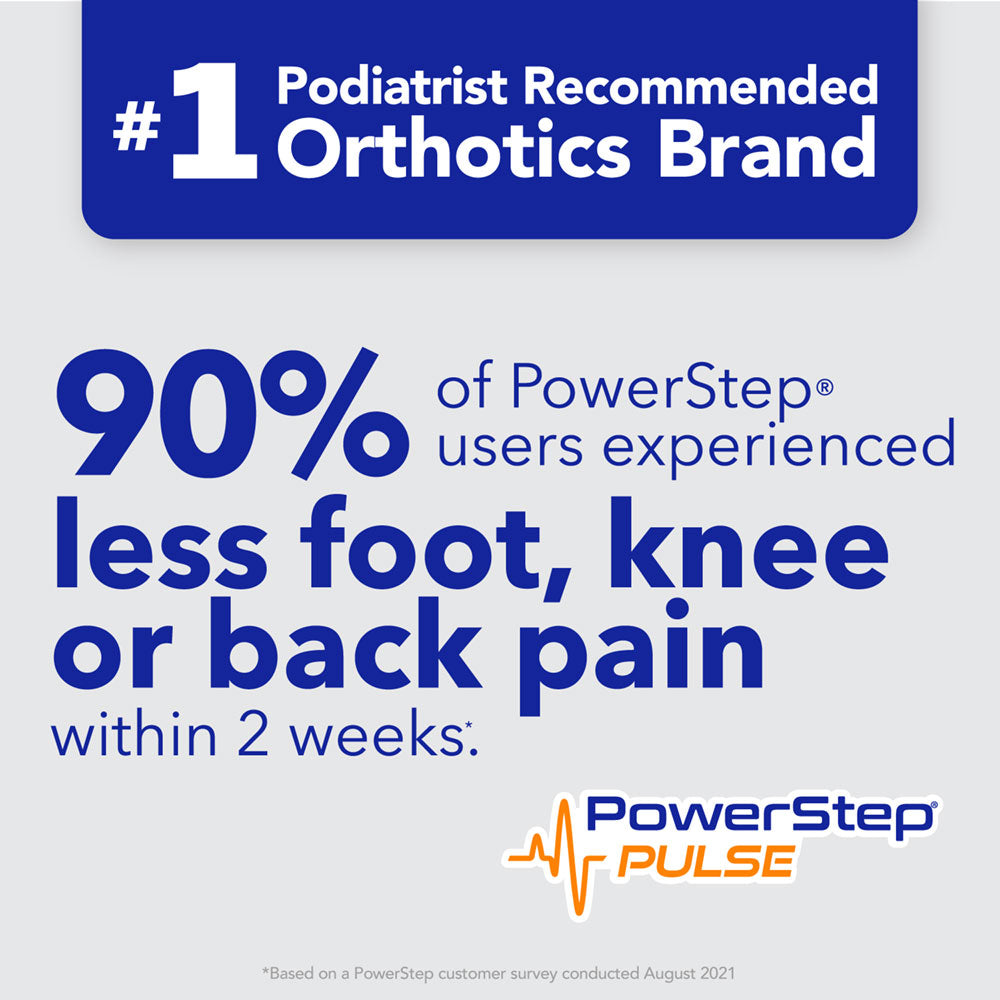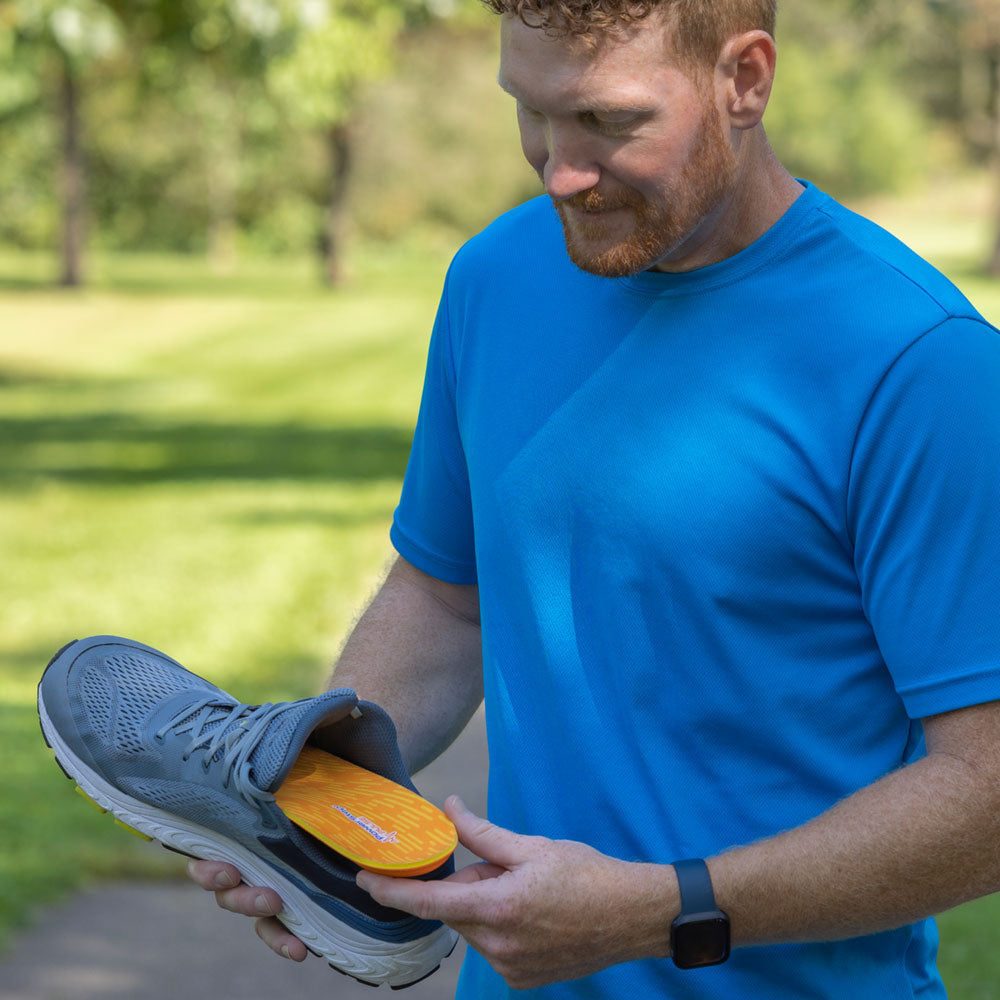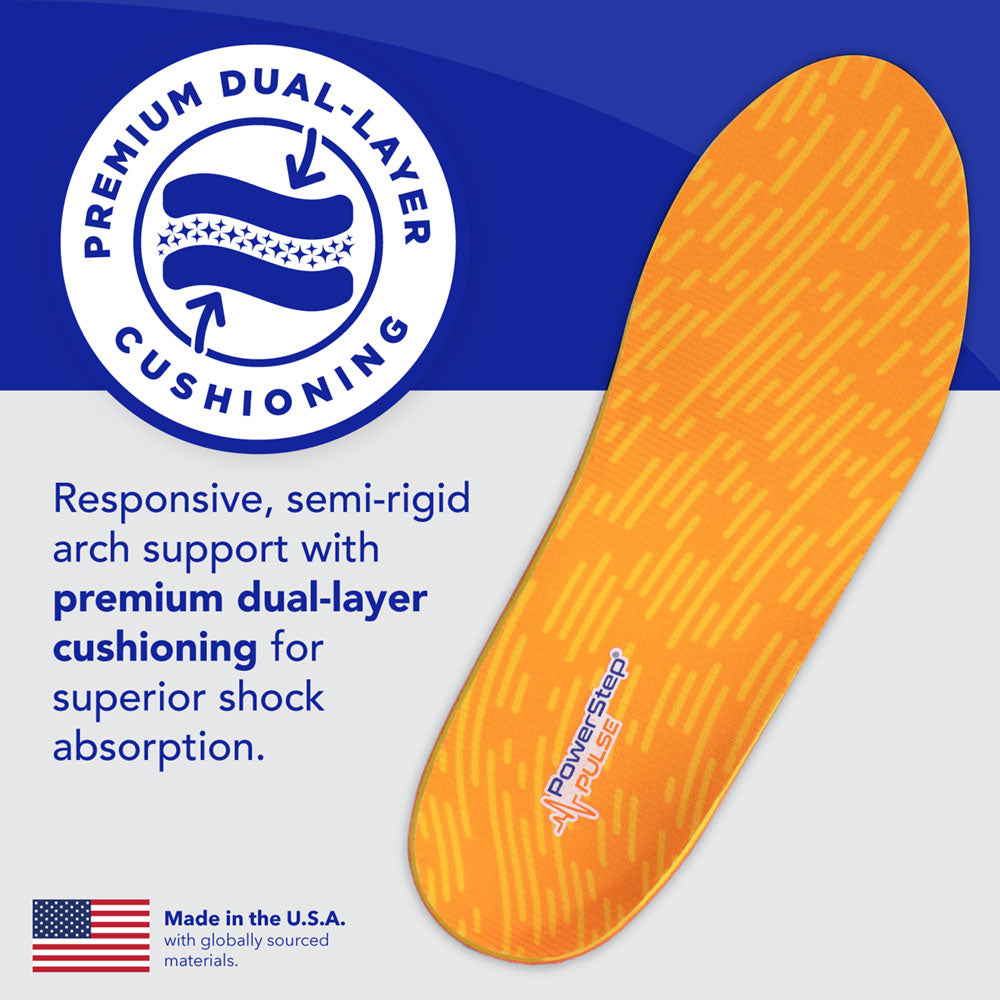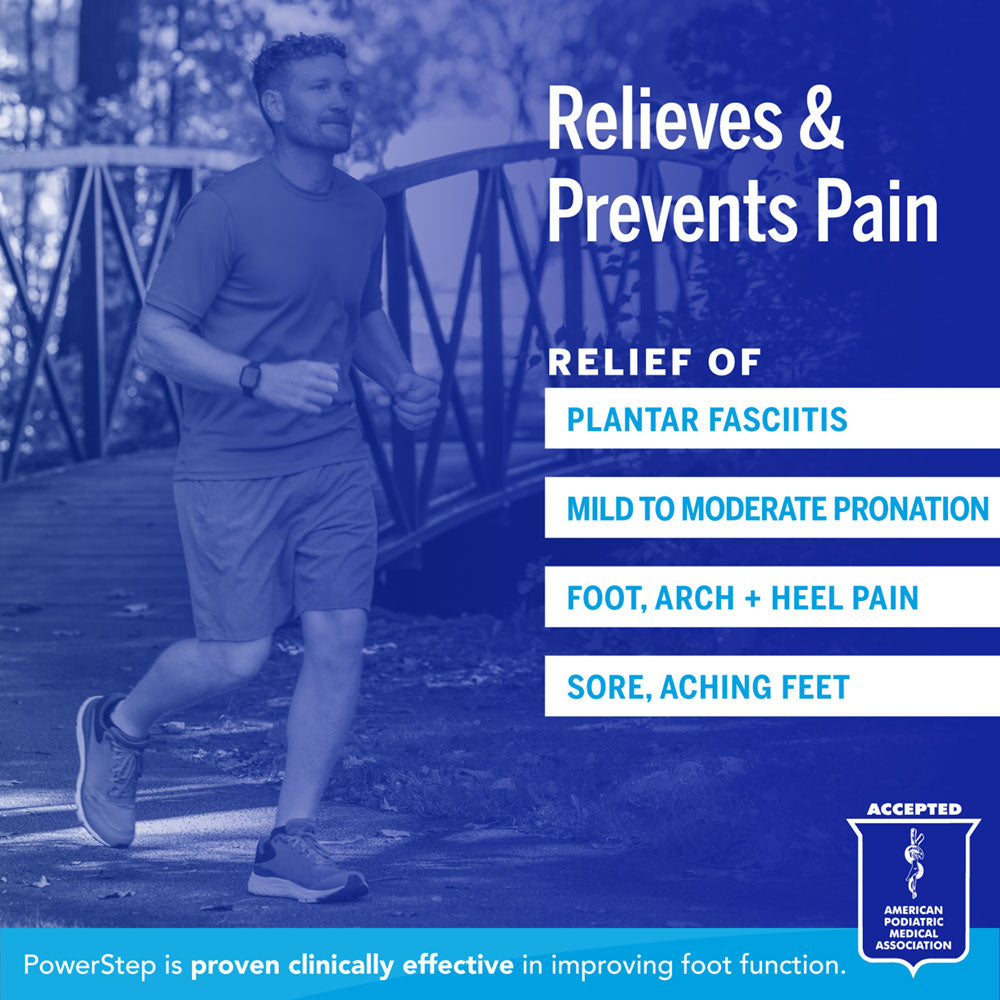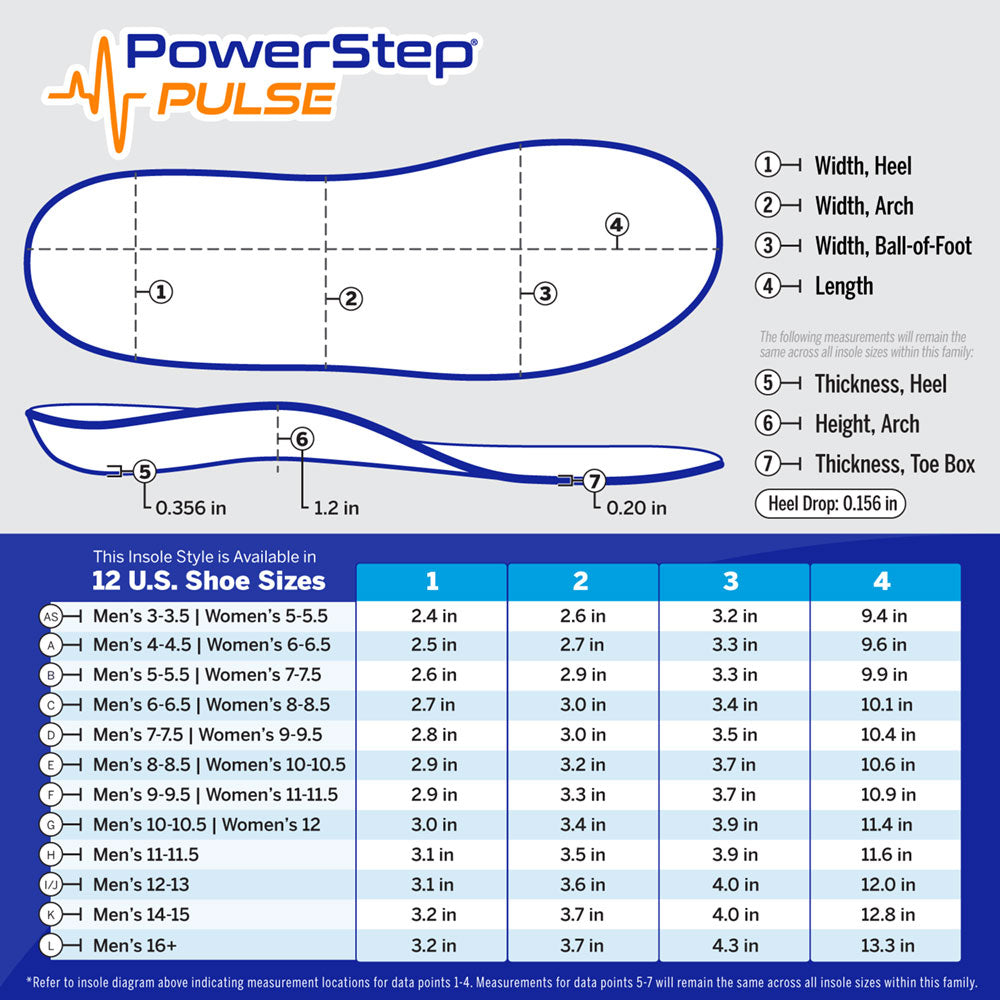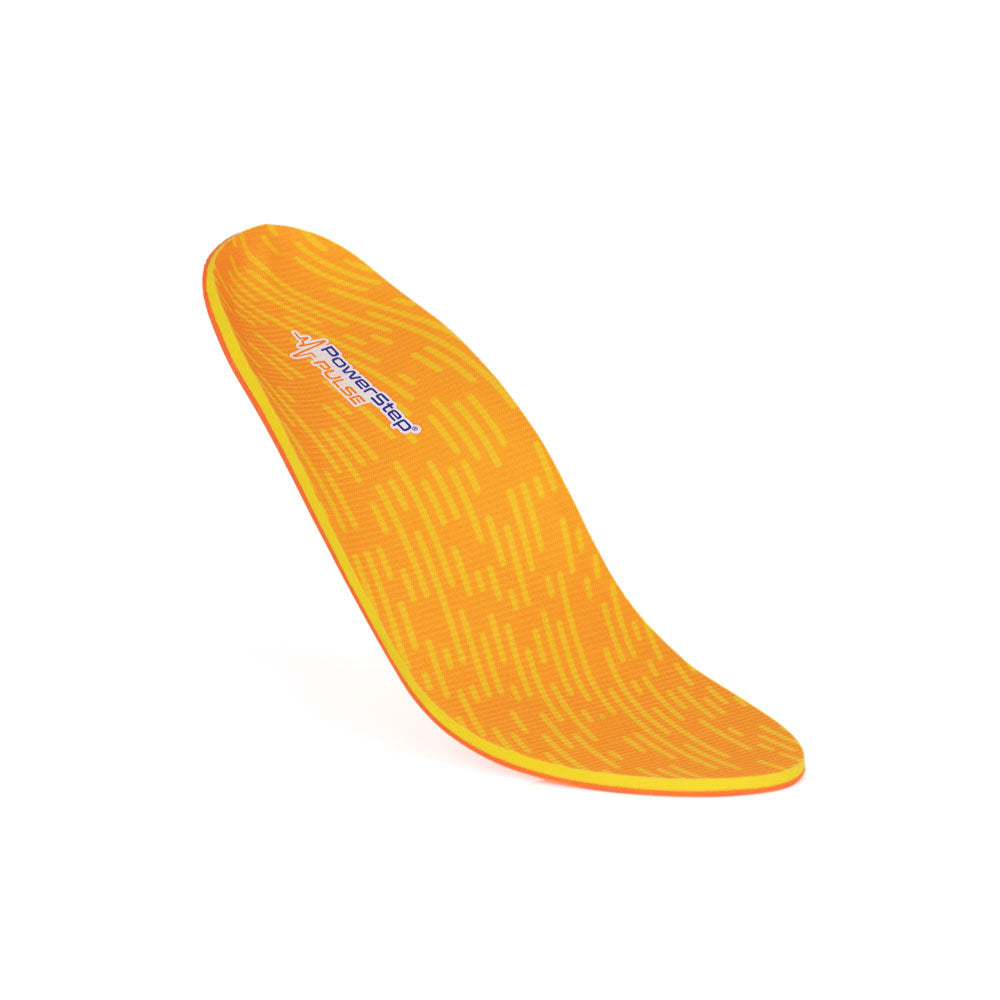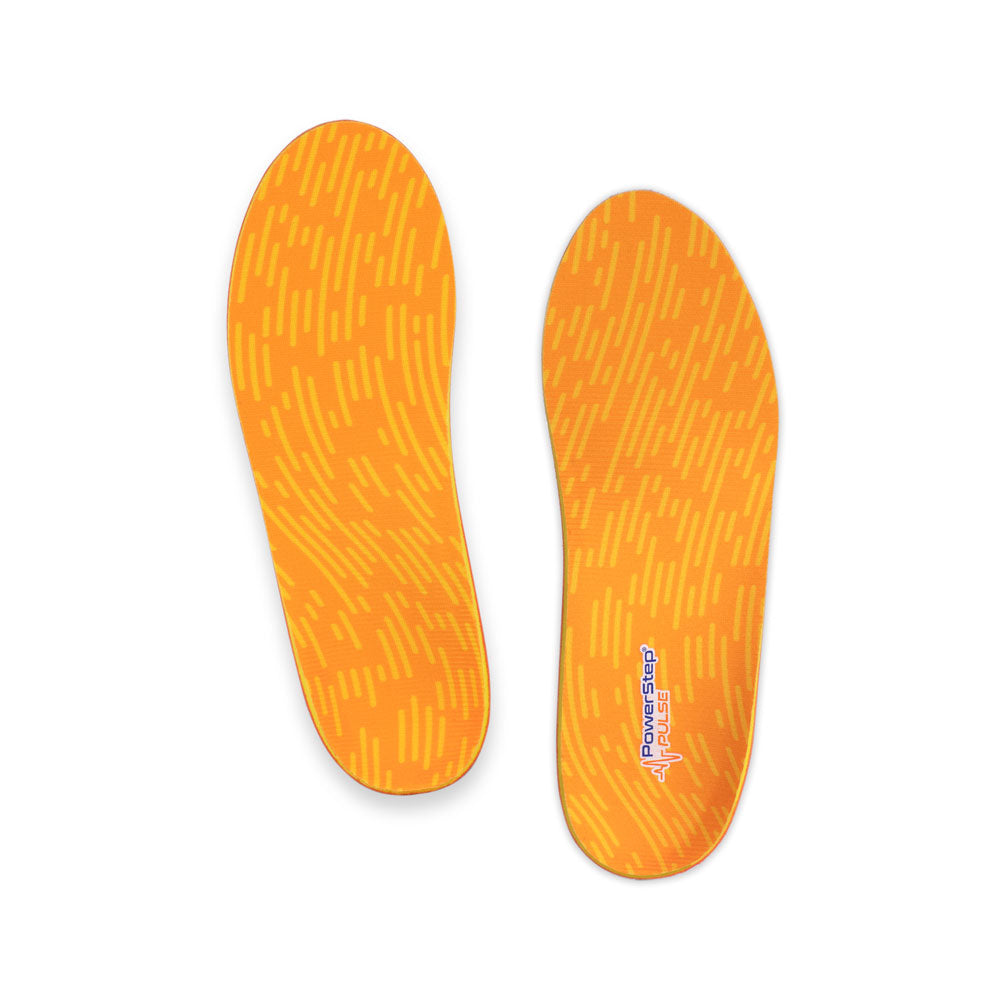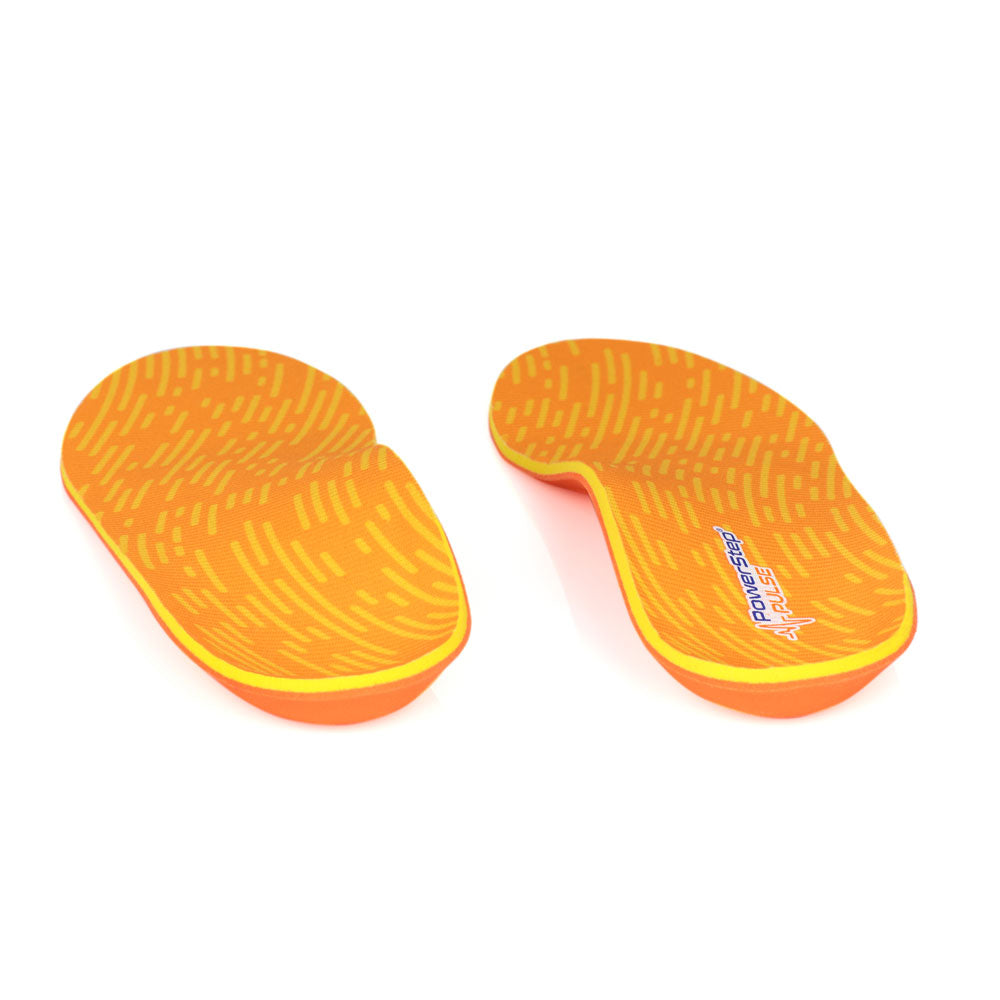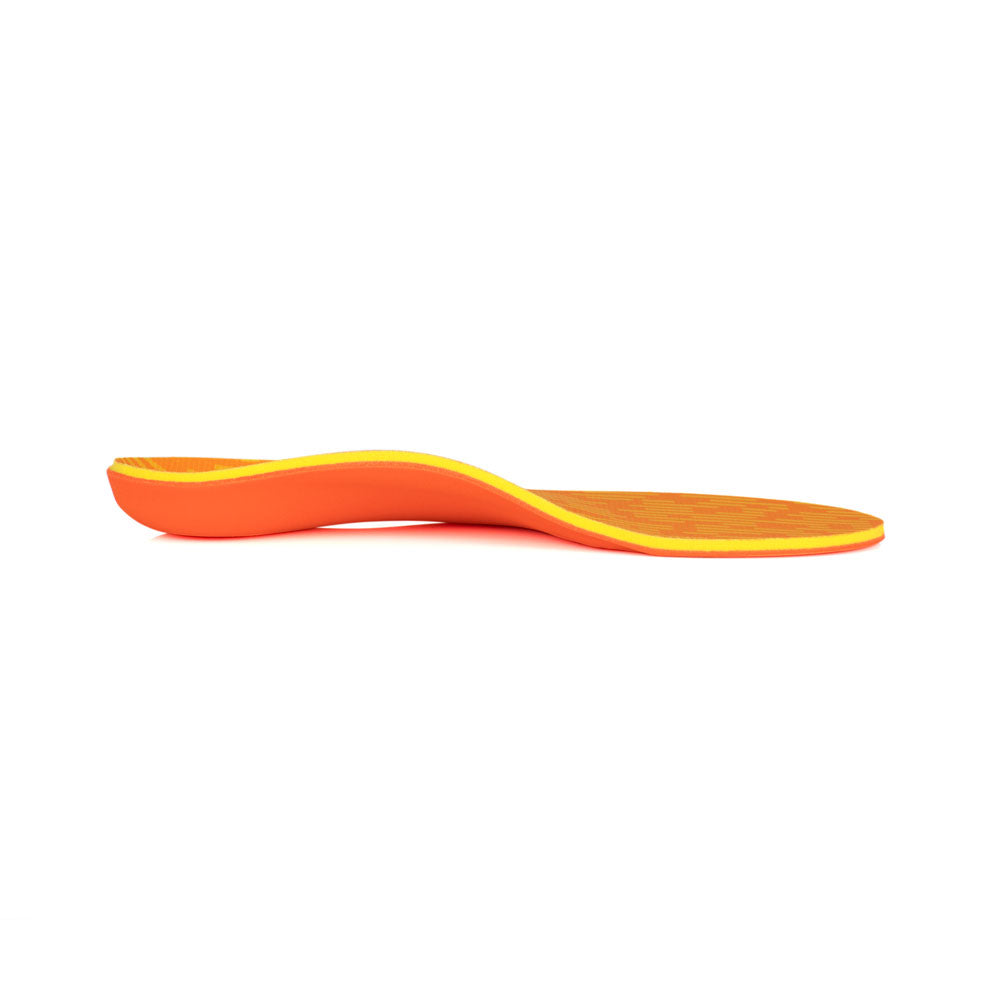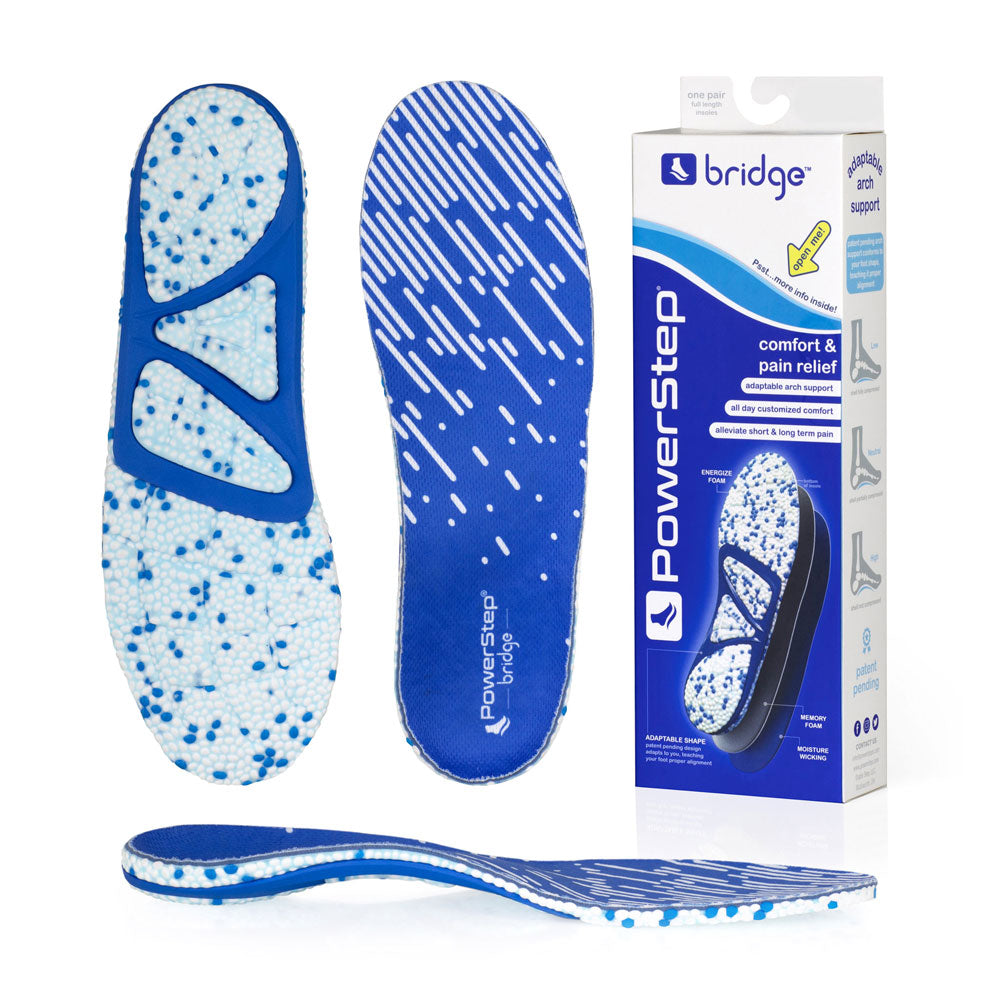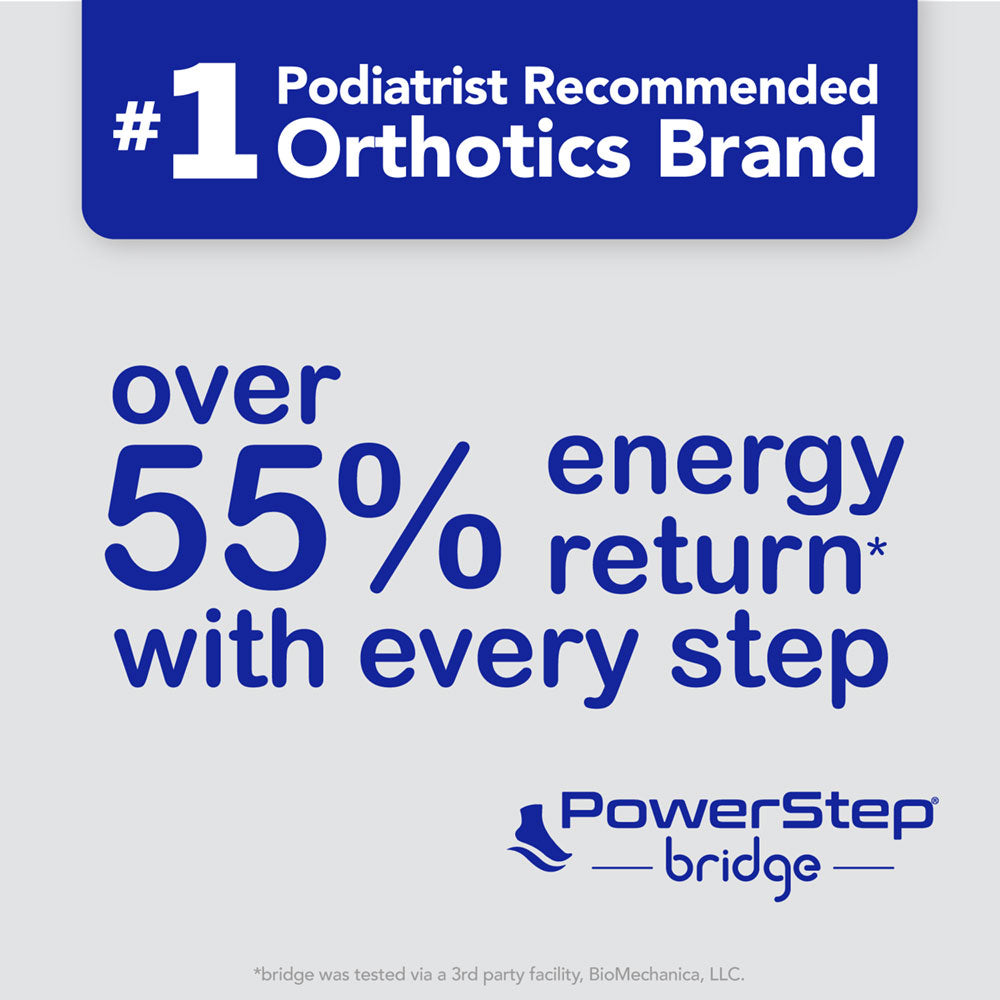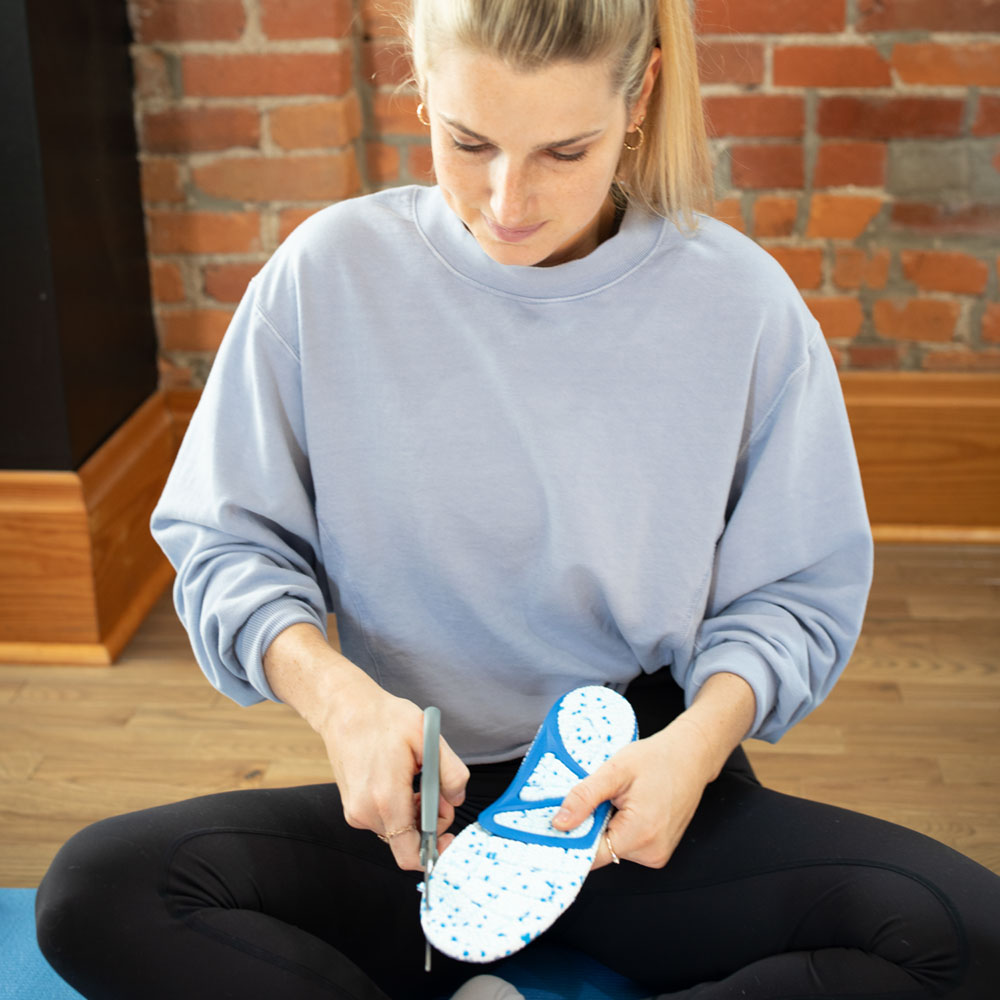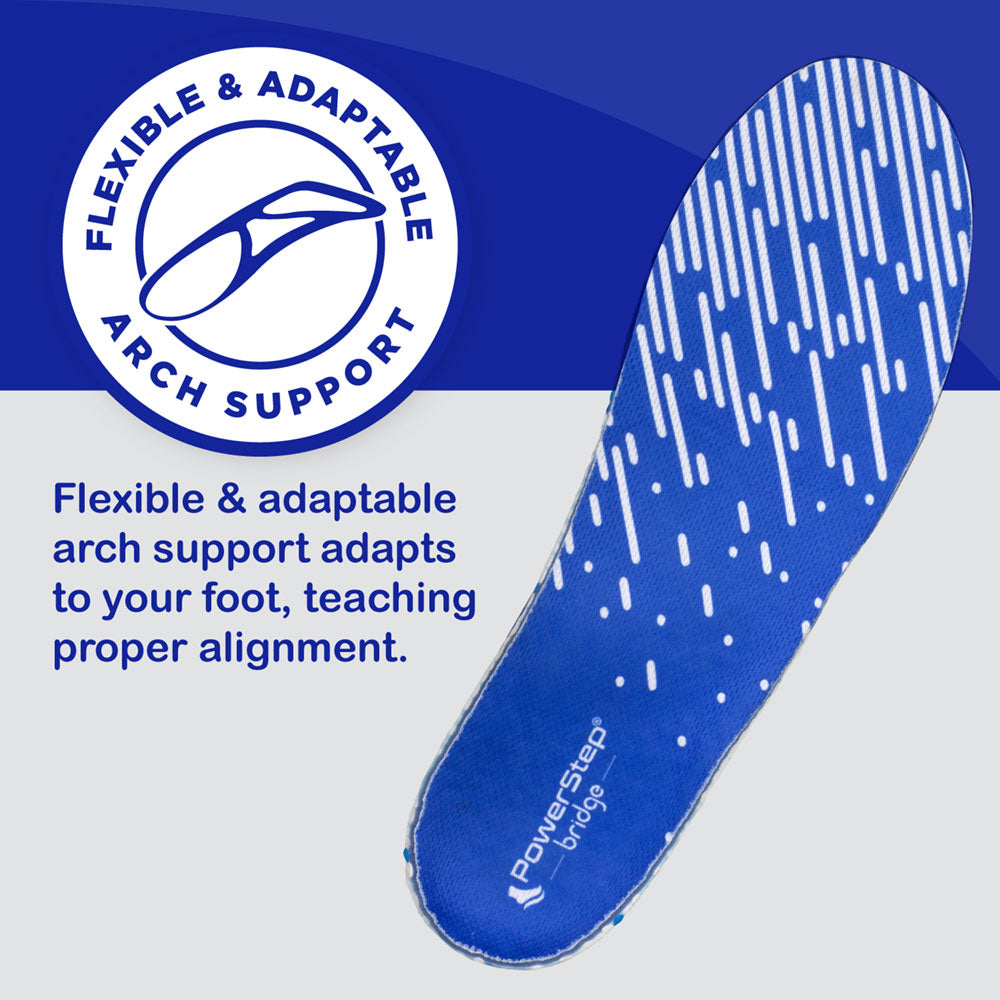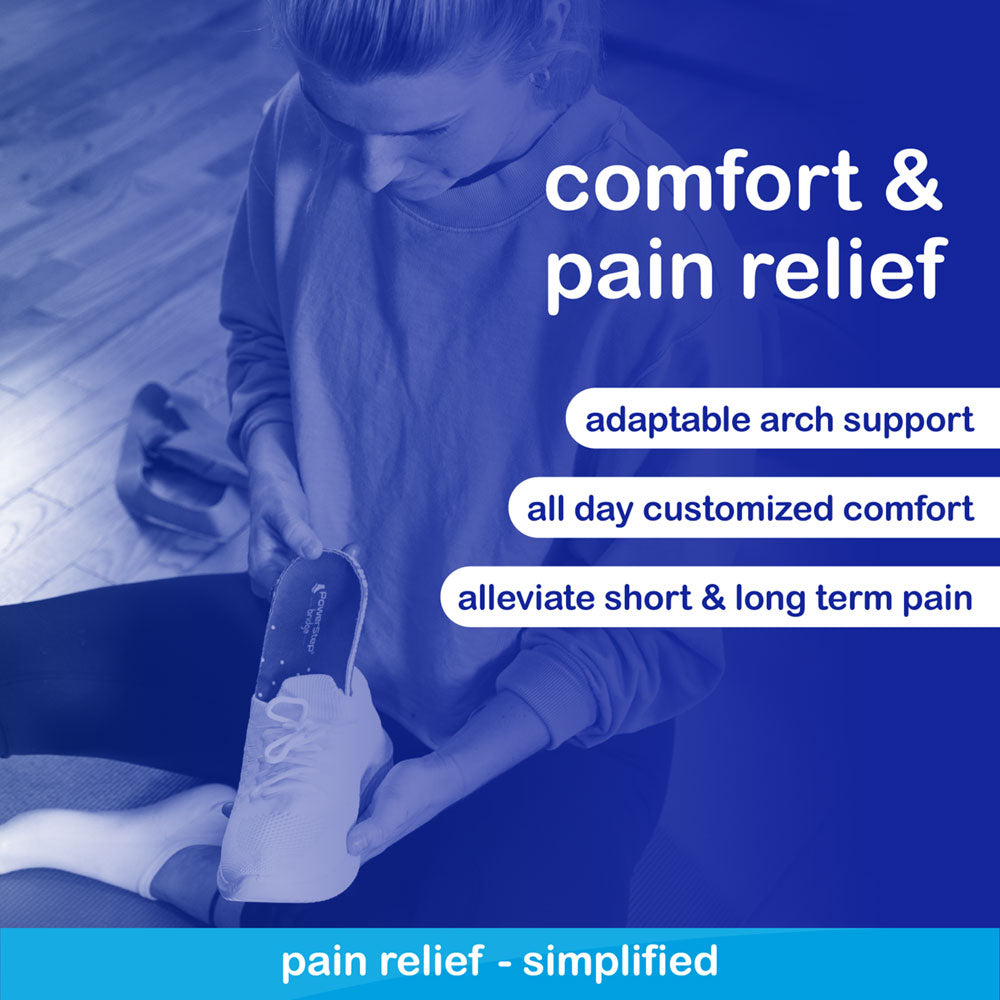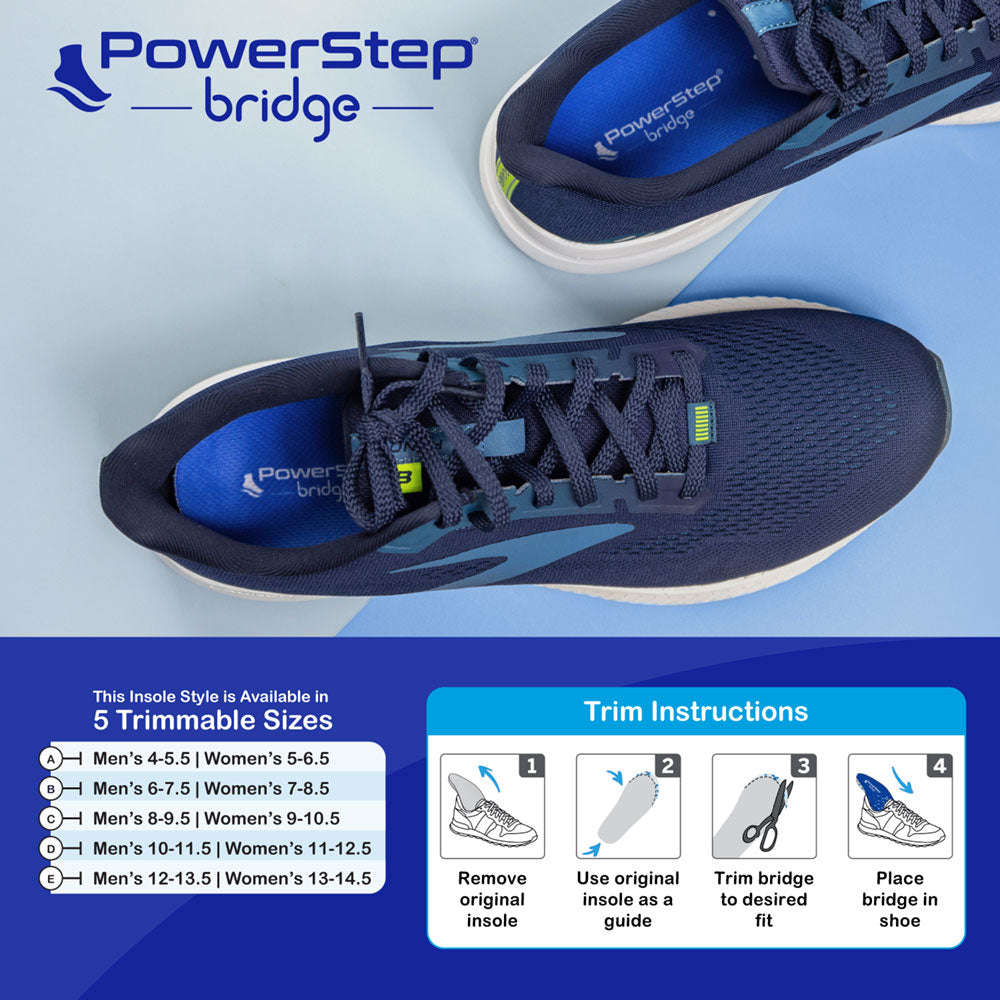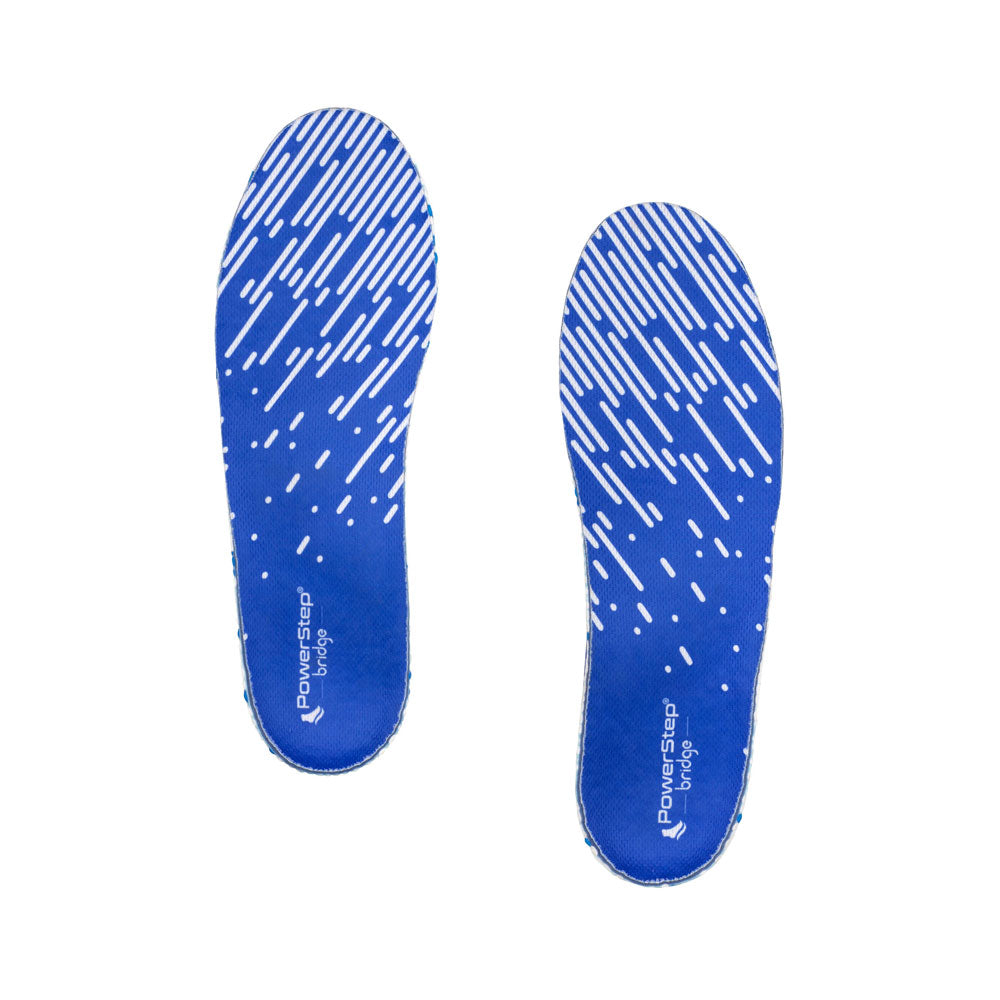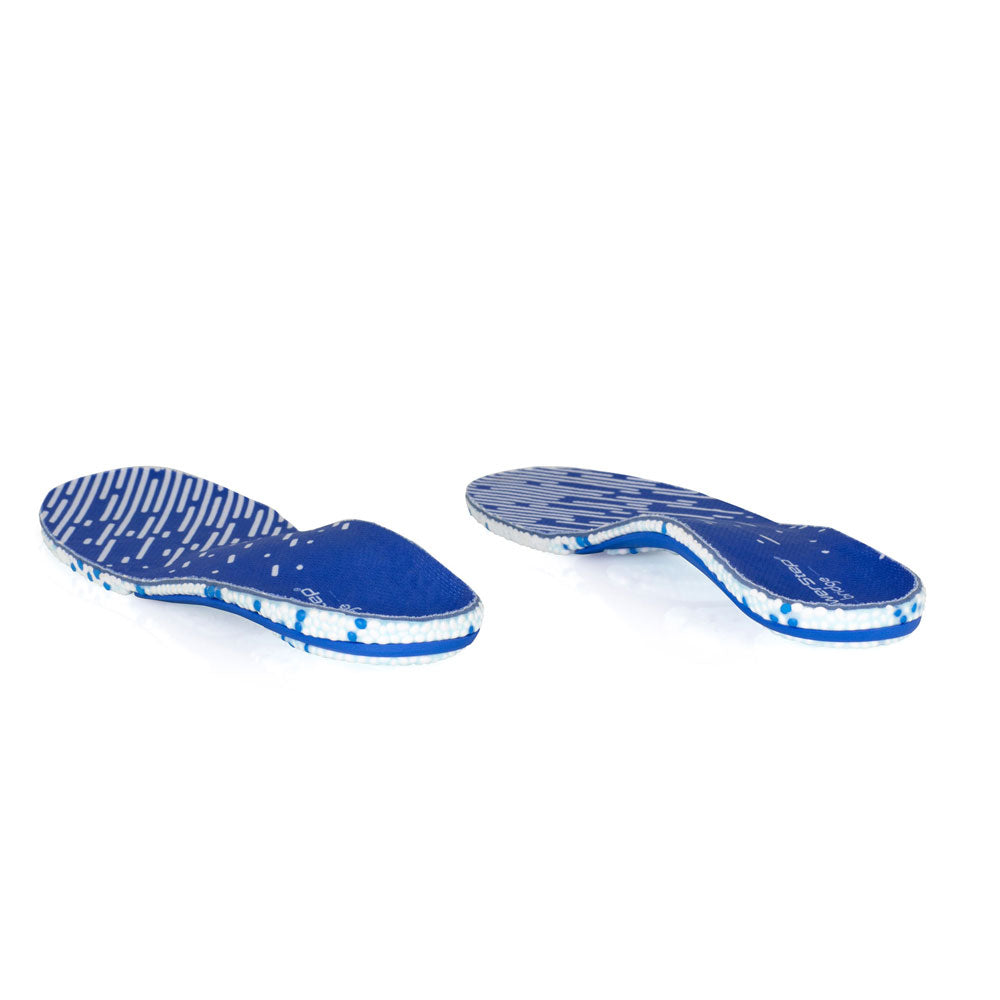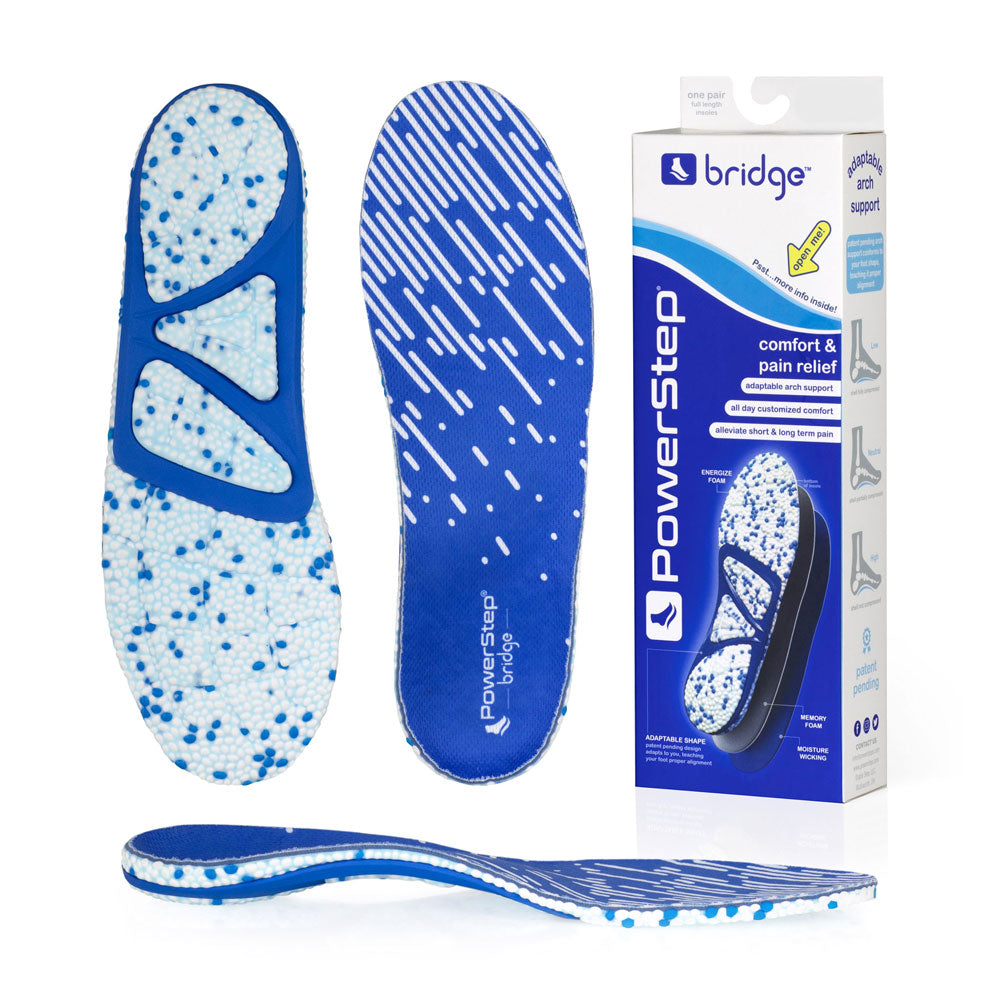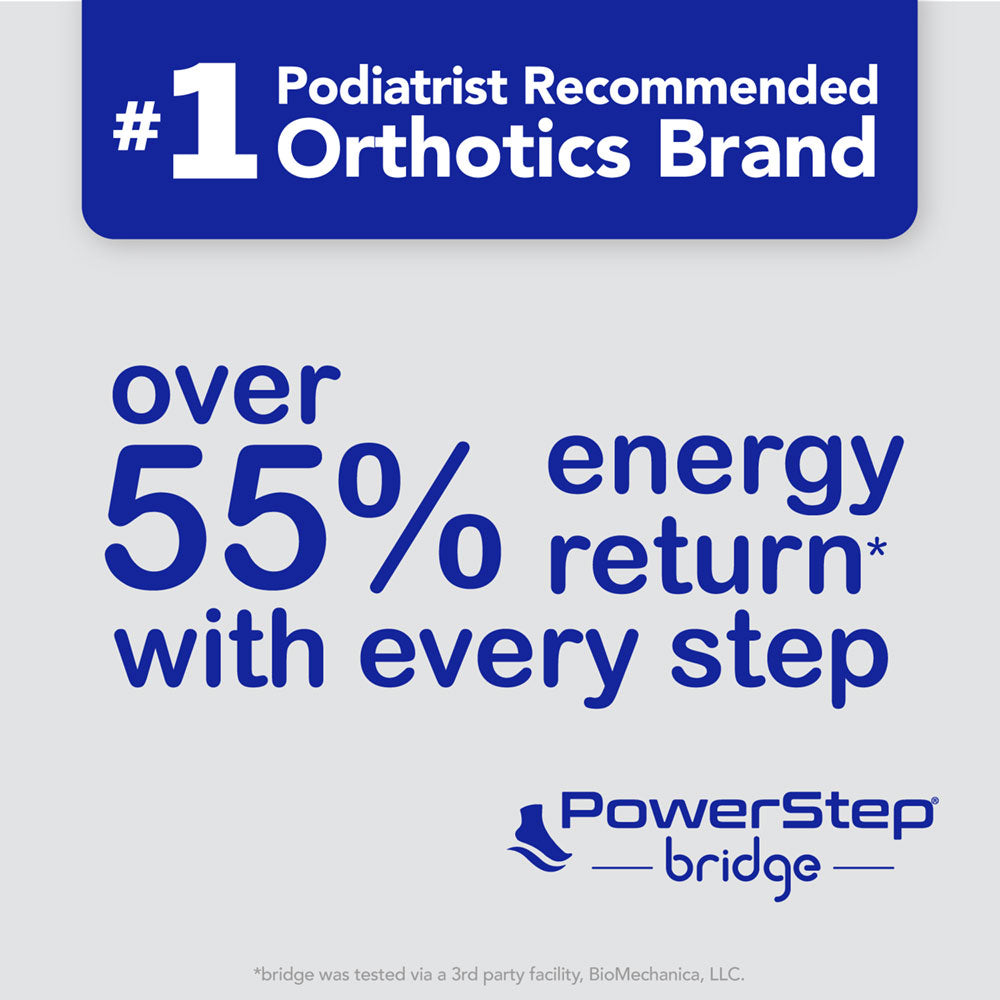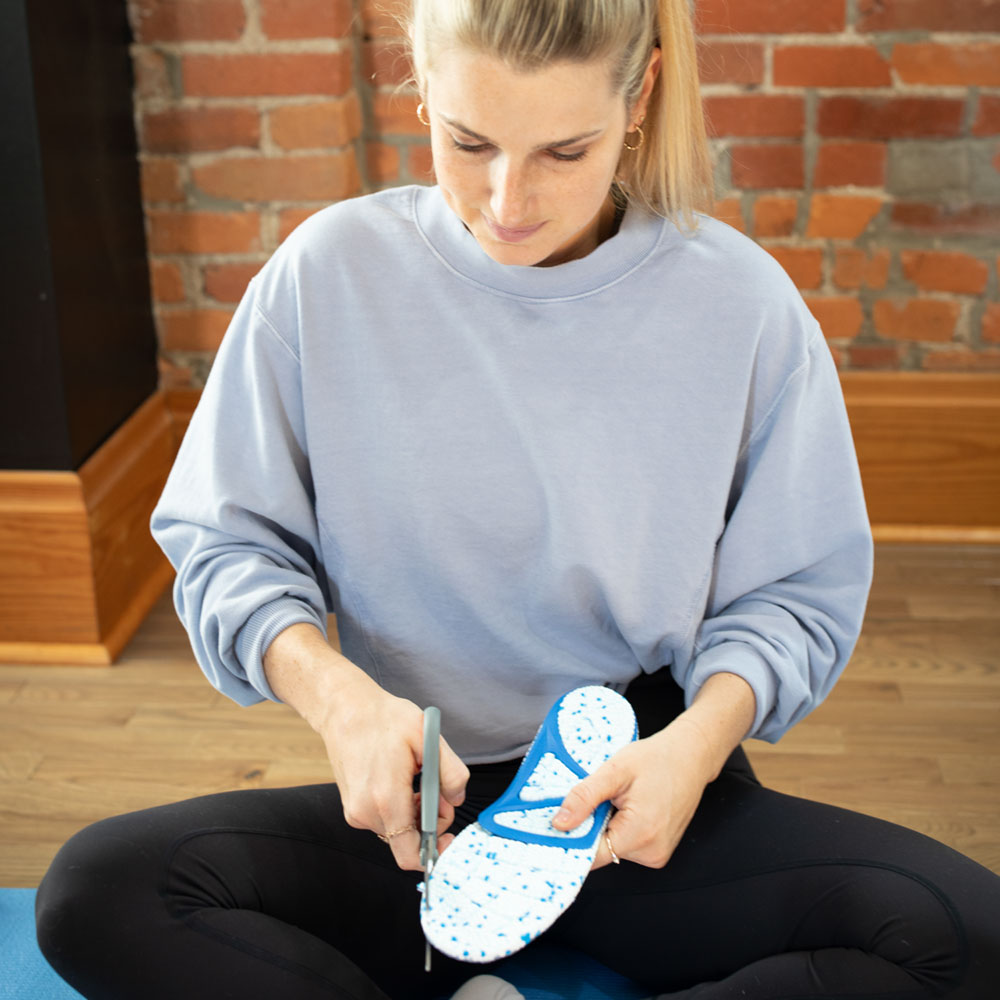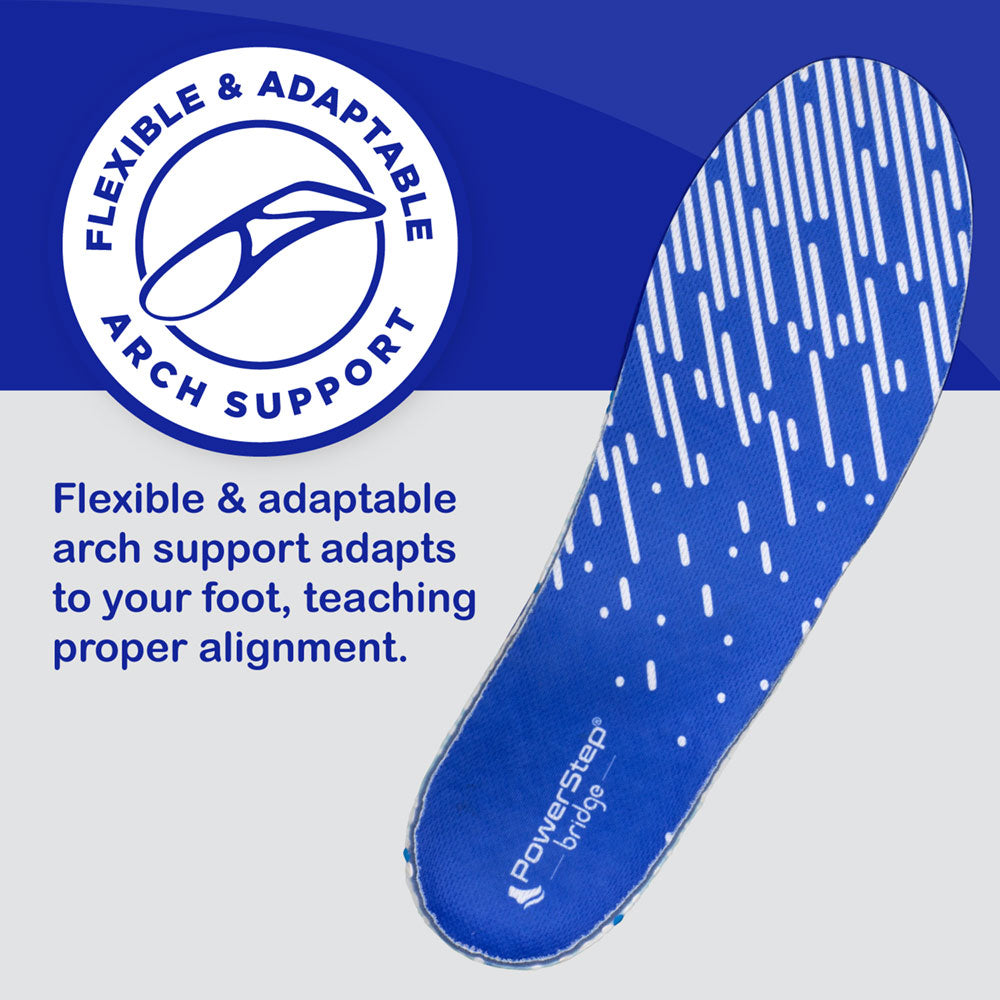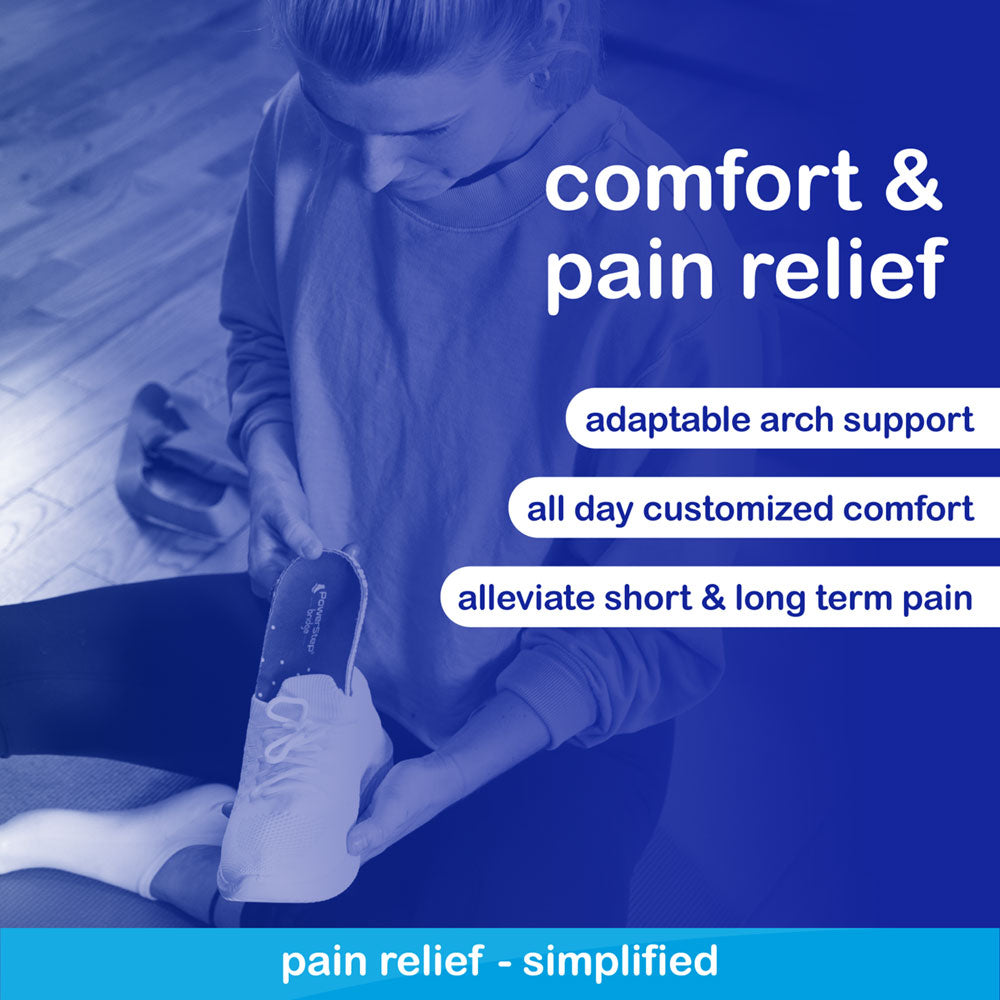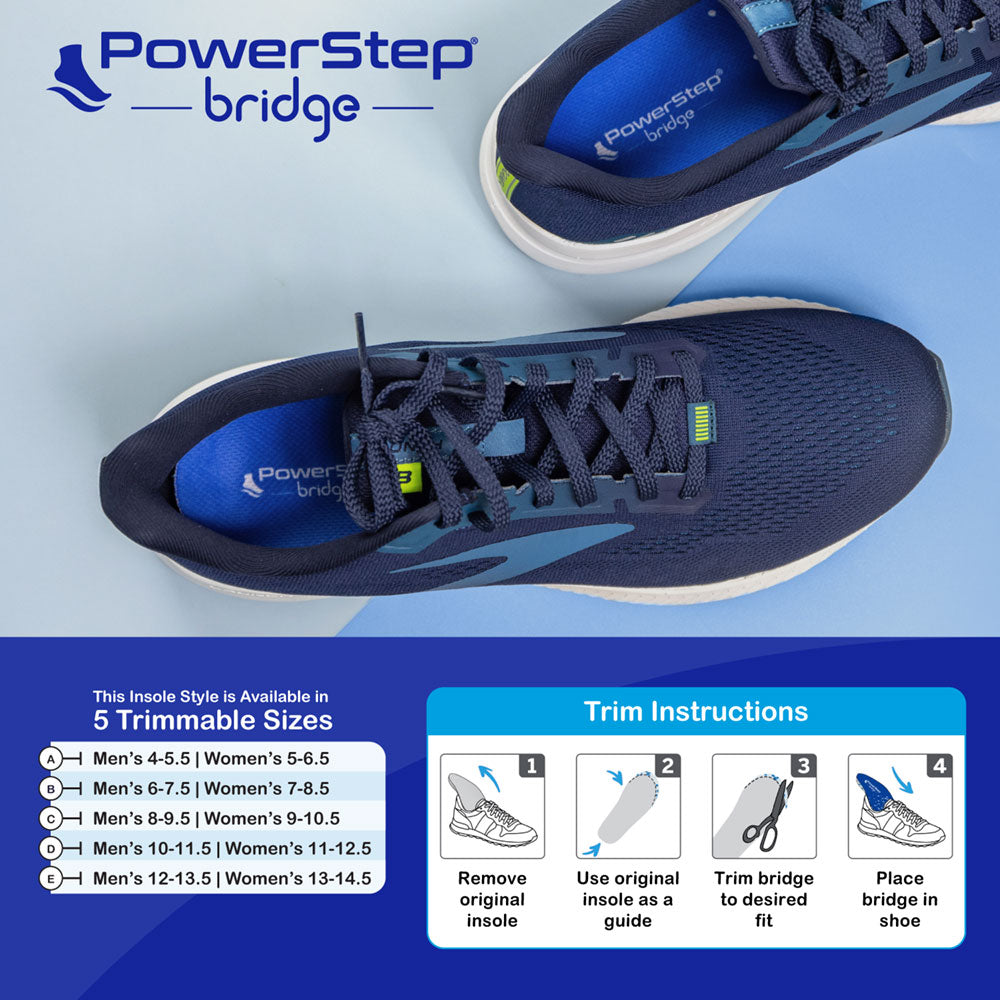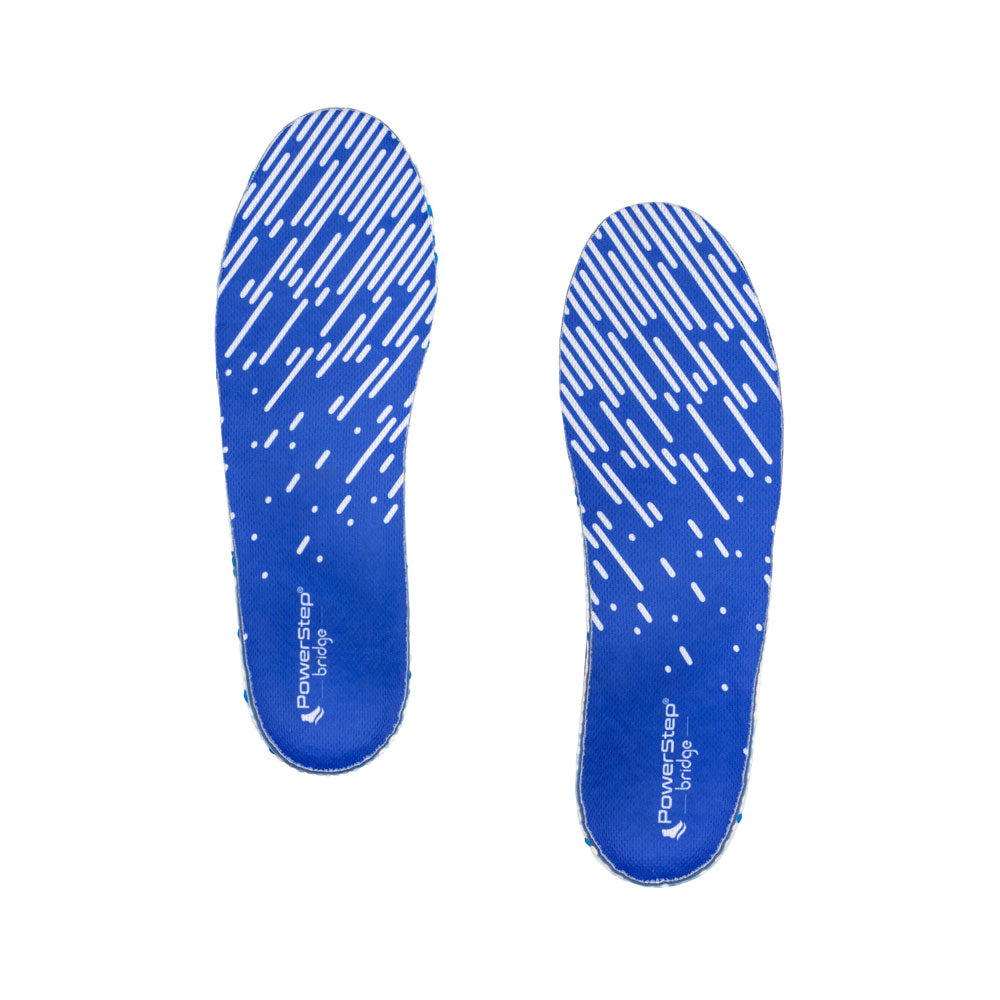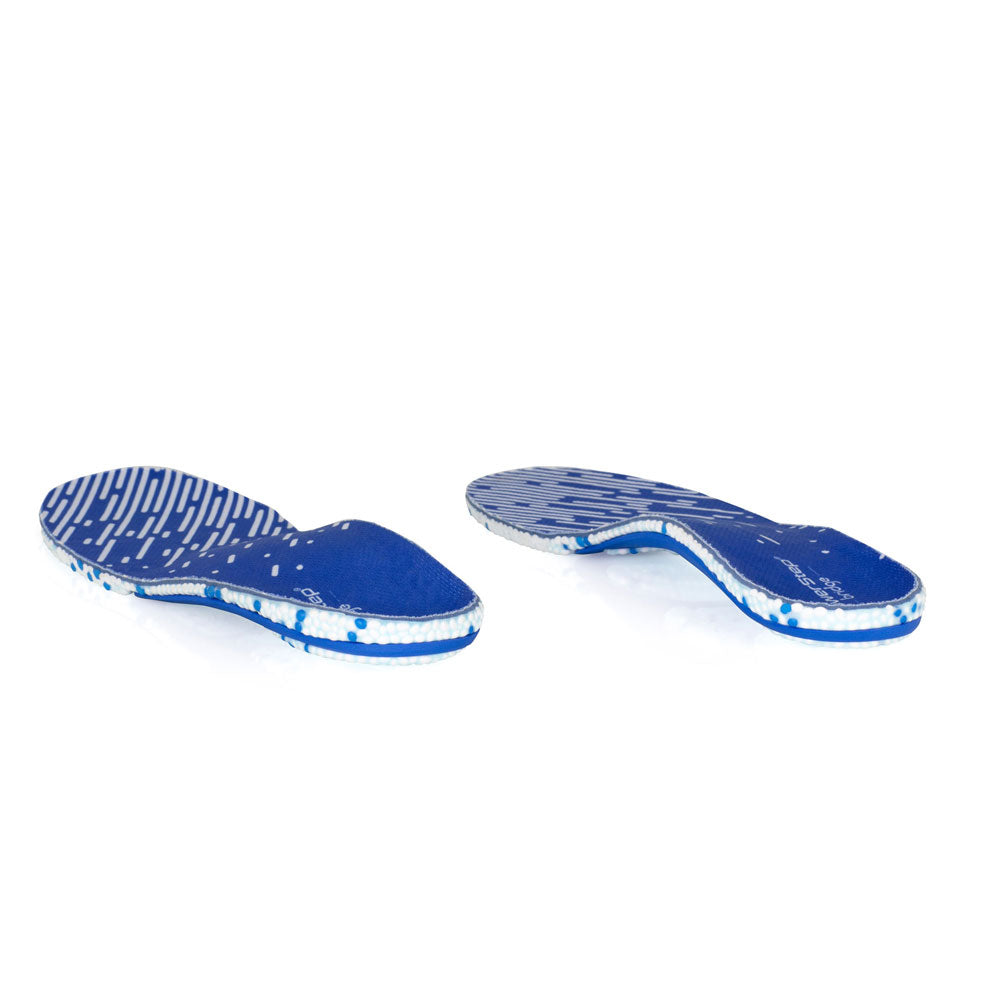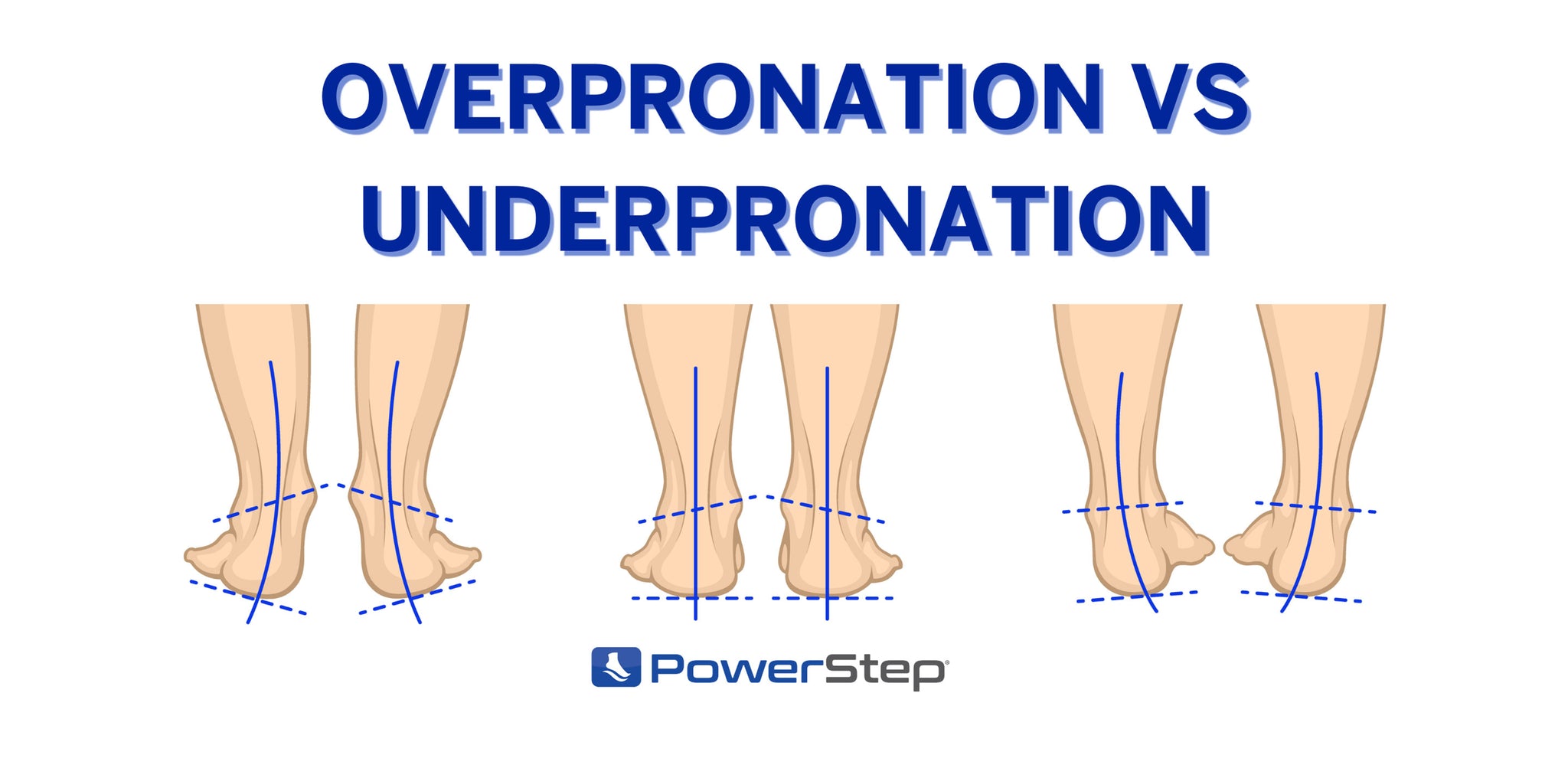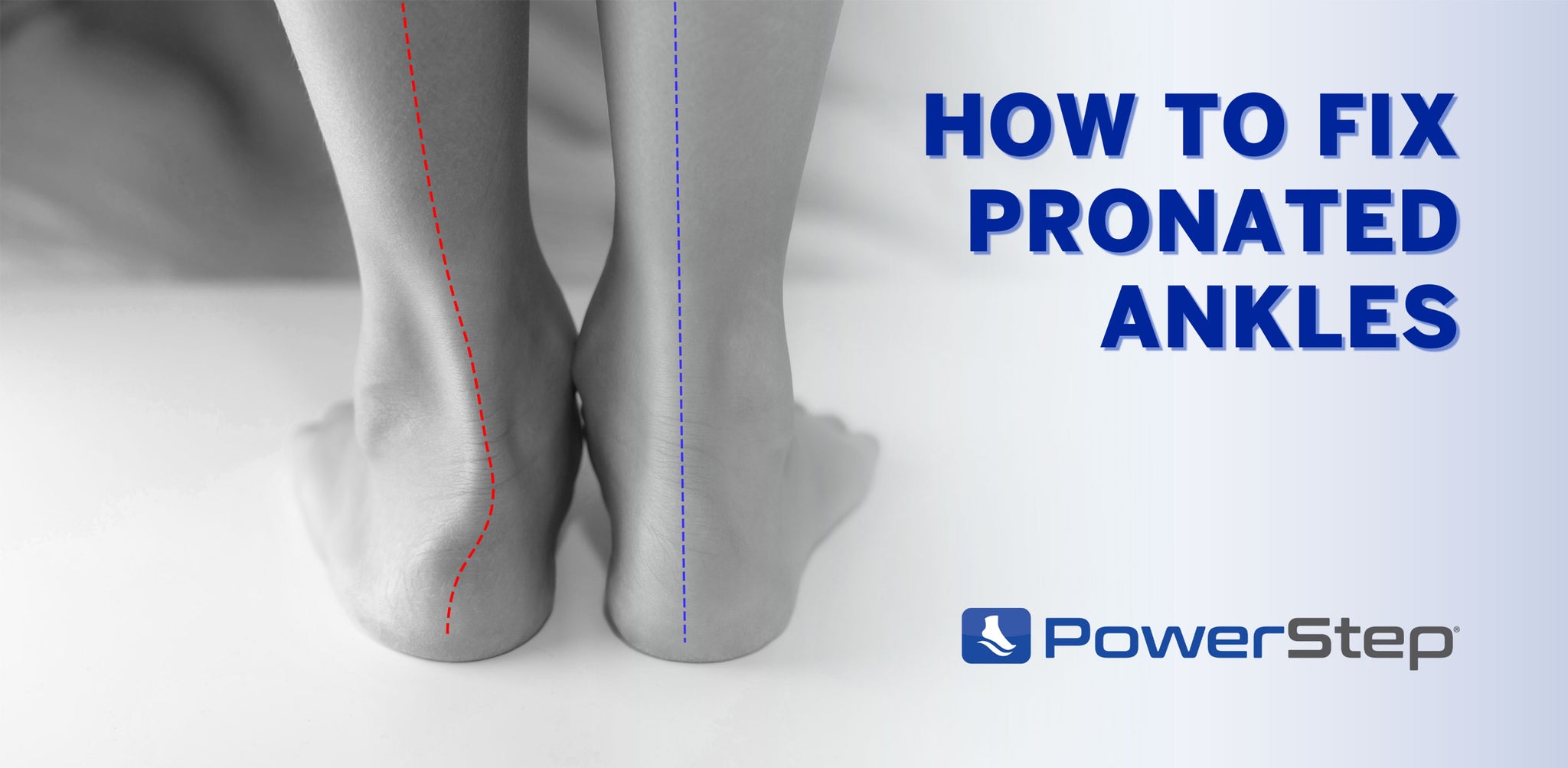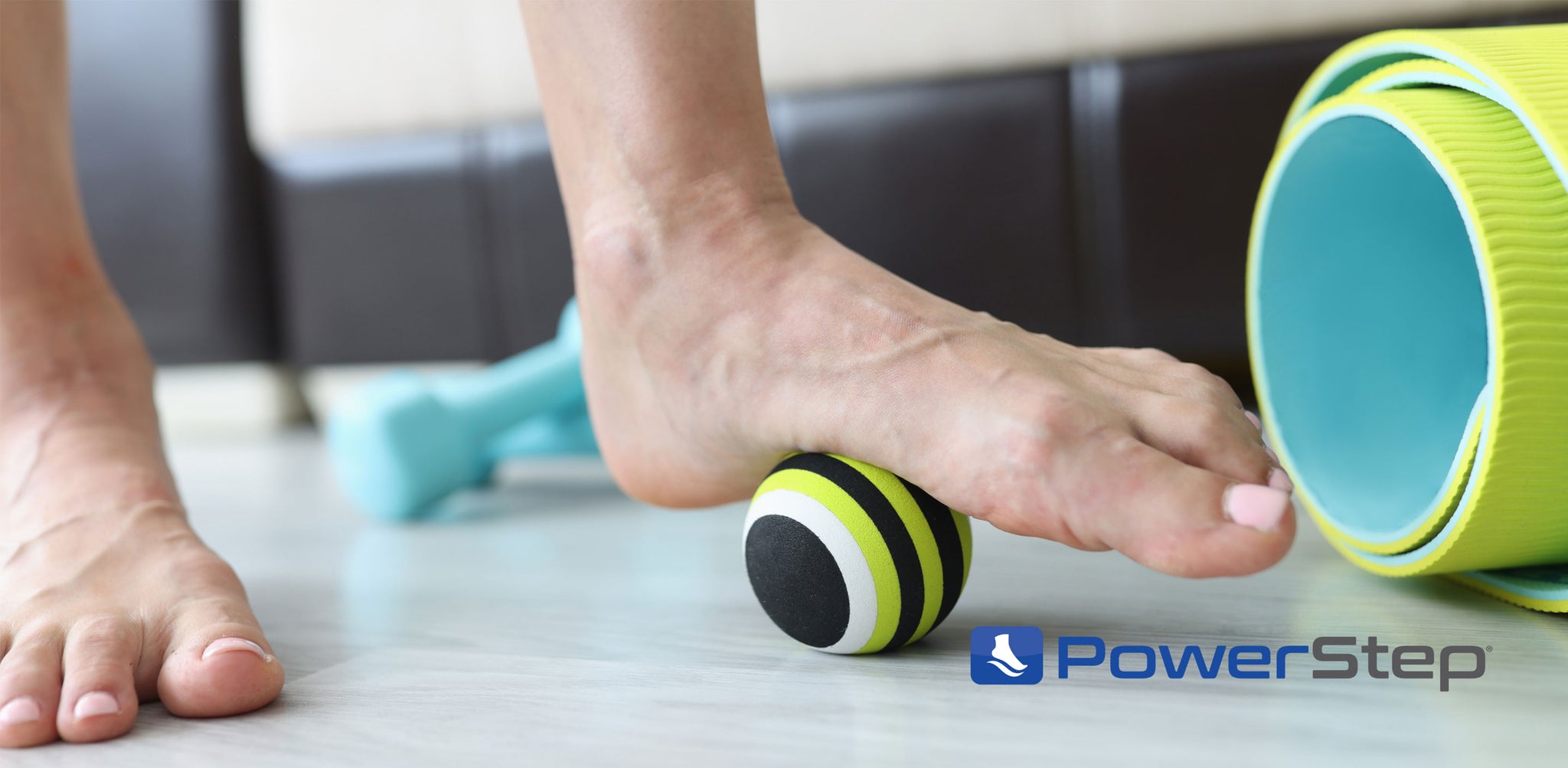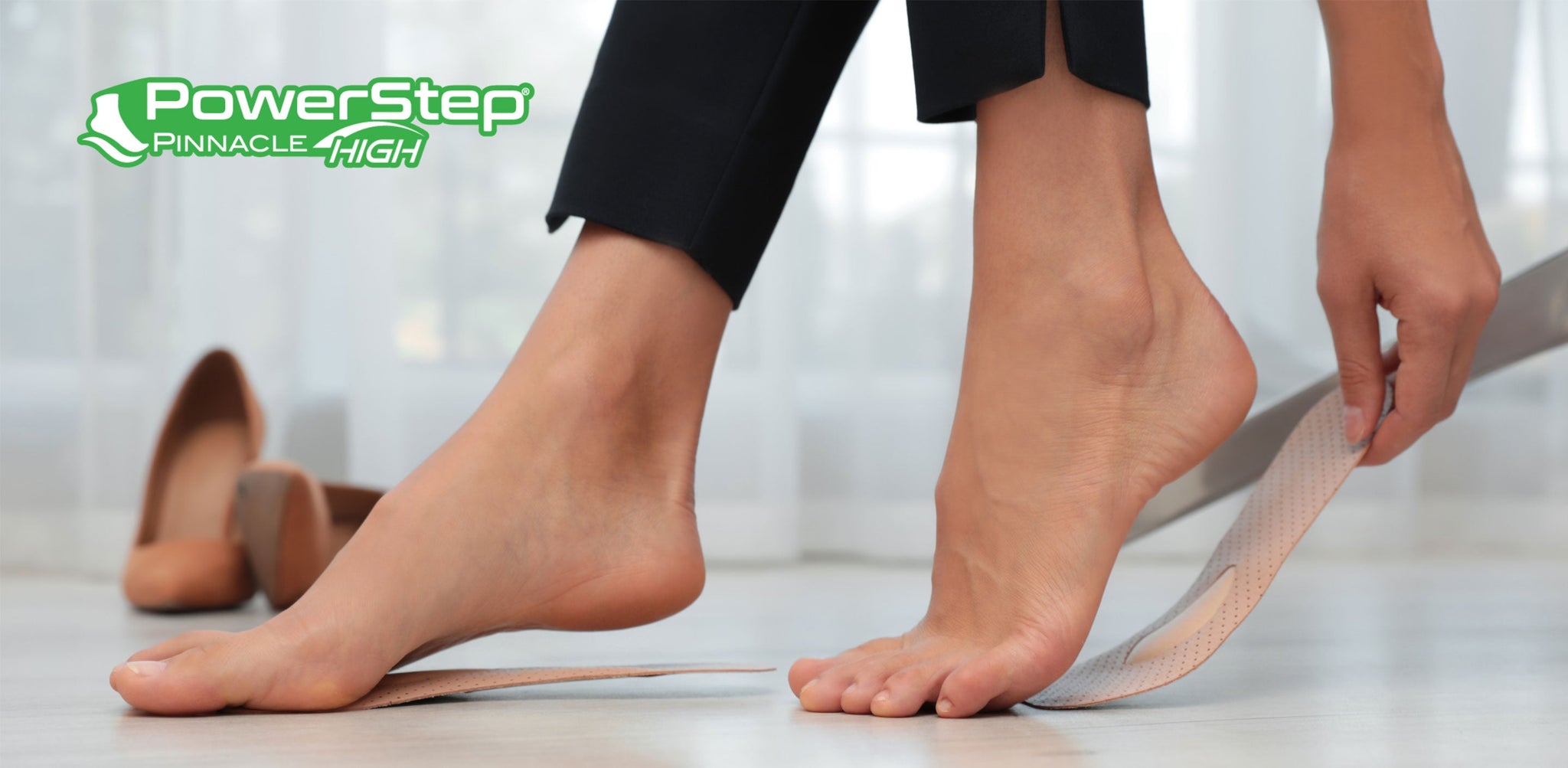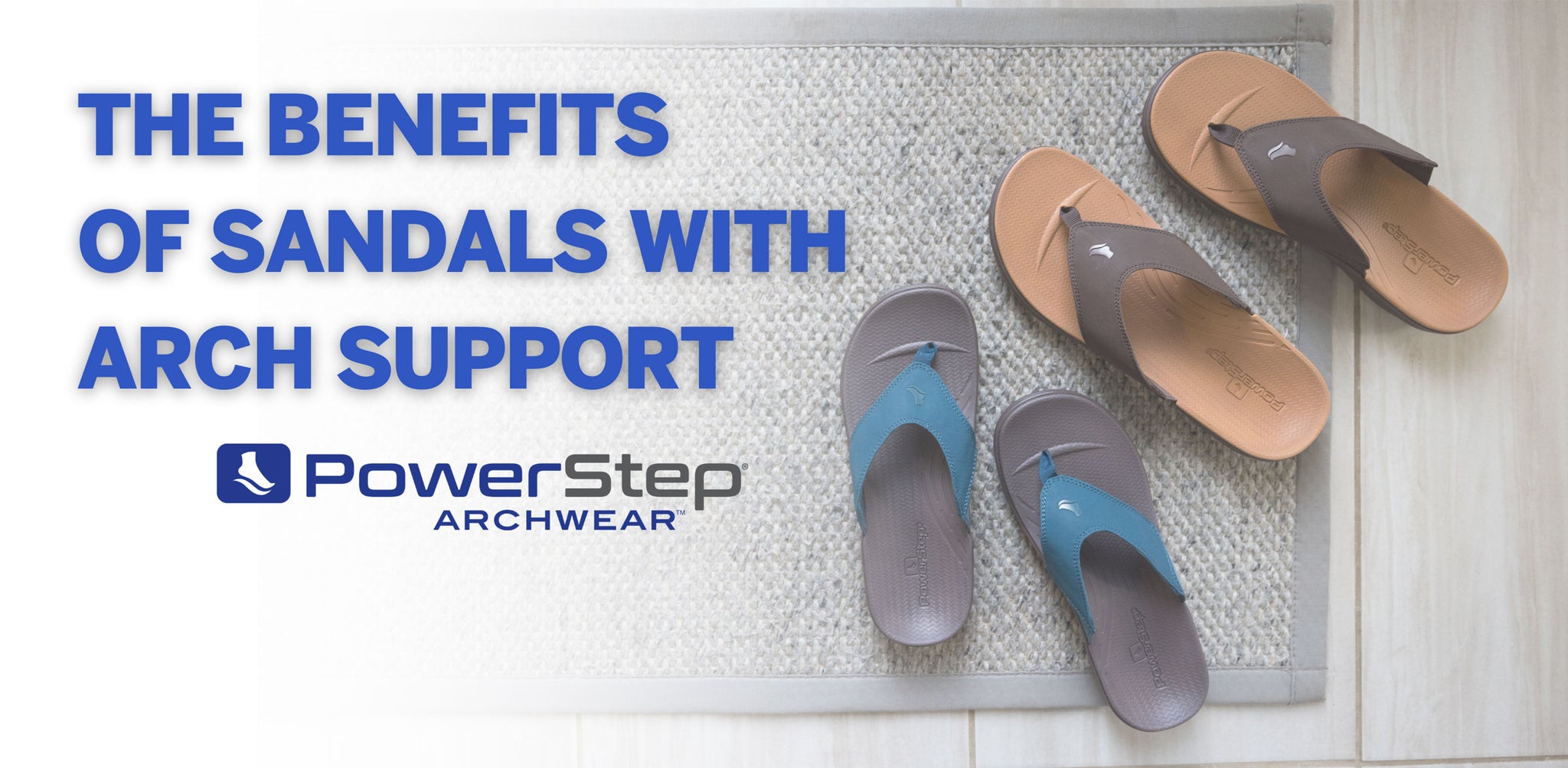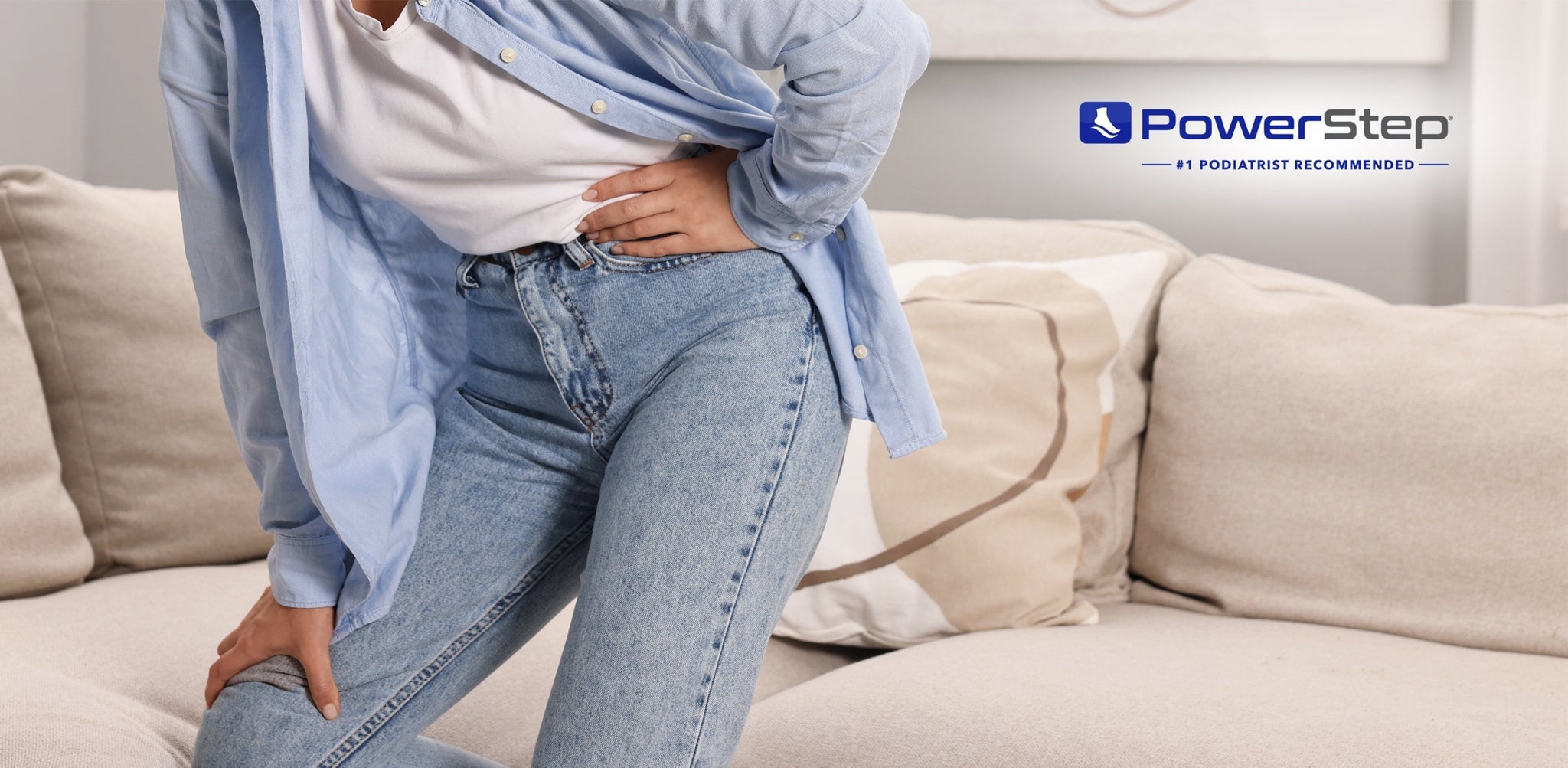Do Your Feet Over or Under Pronate?
Learn how PowerStep® orthotic insoles can help correct, relieve and prevent pain caused by foot pronation.
Why the Way You Step Matters

Overpronation vs Underpronation
With each step, your feet absorb most of the impact the ground has on the body. Your foot arch and how your feet pronate, or roll inward, determine how those forces distribute across the foot.
When your feet roll too much (overpronation) or too little (underpronation), it can cause problems with stability, foot health, and pain.
Understanding Foot Alignment
Types of Foot Pronation
How to Tell If Your Feet Pronate or Supinate
Getting the right amount of support and cushion from shoe insoles can prevent injuries, relieve pain, and improve stability.
Here is how you can tell if you over or under pronate:
- Shoe Wear Patterns: Inner wear on the bottom of your shoes means you likely overpronate, while wear on the outside edge suggests supination.
- Gait Analysis: Many running shoe stores will analyze your gait and where you put the most pressure on your feet to determine your pronation type.
- Visit a Podiatrist: If you have foot pain, visit a foot doctor to help identify if it's related to overpronation or supination.
- Take Our Arch Height Test: Find your arch height to better determine the kind of support you need.
Symptoms of Foot Imbalances
Pain or discomfort may appear in the arches, heels, or along the inner or outer edges of your feet. You may notice fatigue in your feet, ankles, or lower legs, or feel occasional instability while walking or running.
These symptoms can occur in one or both feet and may worsen over time if not addressed. Wearing supportive insoles and properly fitted footwear can help relieve discomfort and reduce the risk of further strain.
Other foot imbalance symptoms can include:
- Development of calluses or corns in areas of the feet
- Swelling or inflammation around the toes or midfoot
- Difficulty standing for long periods without discomfort
- Changes in walking pattern, such as limping or uneven stride
- Increased susceptibility to ankle sprains or rolling the foot
What Causes Foot Imbalances?
Foot imbalances are often attributed to genetics and natural variations in foot structure, such as arch height. Repetitive stress from activities like running, walking, or standing for long periods can worsen these conditions.
People at higher risk include those with flat feet or high arches, athletes, and anyone wearing shoes that do not provide adequate support. Improper footwear or sudden changes in activity intensity can also contribute to discomfort.
Other foot imbalance causes may include:
- Uneven leg length or structural differences between the feet
- Previous injuries such as ankle sprains, fractures, or tendon damage
- Obesity or sudden weight gain that increases stress on the arches and feet
- Neurological conditions that affect balance or gait patterns
How to Treat Foot Imbalances
You can manage symptoms at home by wearing supportive insoles and shoes designed for your foot type, along with stretching and strengthening exercises for the feet and lower legs. Gradually adjusting activity levels and substituting high-impact exercises with low-impact options like swimming or cycling can also help.
Without proper support and care, ongoing foot imbalances can contribute to foot pain or other musculoskeletal issues. Most experts recommend addressing discomfort early and gradually returning to normal activity once symptoms improve.
Treatment options for foot imbalances include:
- Physical therapy or gait analysis to identify and correct movement patterns
- PowerStep® Heat Moldable orthotics or custom orthotics prescribed by a podiatrist for specific structural issues
- Taping or bracing techniques to provide temporary support during activities
- Weight management to reduce excess strain on the feet
- Footwear modifications such as metatarsal pads, heel lifts, or foot rockers


Why It Matters & How It Causes Pain
Many types of foot pain as well as ankle, knee, hip and back pain are caused by abnormal foot pronation. Even normal pronation can cause discomfort when you spend a lot of time on your feet.
Overpronation and underpronation put more pressure on specific areas of the feet rather than evenly distributing it, causing conditions like plantar fasciitis, Achilles tendonitis, metatarsalgia, ankle instability, shin splints, and more.
Feet that overpronate or supinate can also affect your body’s alignment, creating knee, hip and back pain. Wearing overpronation insoles or supination insoles with arch support can relieve and prevent pain and may help correct abnormal movement.

Podiatrist Recommended Brand of Insoles for Overpronation & Supination
PowerStep® orthotic insoles are clinically proven to relieve and prevent pain caused by mild to moderate pronation. Our patented arch shape and deep heel cradle help stabilize and align the feet to improve motion control while shock absorbing cushioning absorbs impact at each step.
PowerStep® is the trusted solution for improved foot function and pain relief, preventing foot problems at the source.
Insoles for Every Type of Pronation
Whether your feet roll inward, outward, or stay neutral, PowerStep® orthotic insoles deliver the ideal balance of cushioning and support.


Designed to promote proper alignment, PowerStep® orthotic insoles help reduce strain from pronation, overpronation, or supination to keep your steps stable and comfortable.
Our best insoles for your foot alignment include:
PowerStep® Insoles for Pronation
Designed for feet with a natural, balanced gait, our neutral pronation collection helps maintain proper alignment and support for steady, comfortable movement.
With cushioning that supports the foot’s natural mechanics, these insoles help reduce stress on the arches and heels, promoting overall foot comfort and helping prevent common foot pain.
PowerStep® Insoles for Overpronation
Designed for feet that roll inward, our overpronation collection helps stabilize and align the feet for more balanced movement.
With supportive cushioning, these insoles help reduce stress on the arches and heels, relieving discomfort associated with common foot conditions like plantar fasciitis, flat feet, and general overpronation-related pain.
PowerStep® Insoles for Supination
Designed for feet that roll outward, our supination collection helps support and align the feet for more balanced movement.
These insoles help reduce stress on the arches, heels, and outer edges of the feet, easing discomfort linked to common foot conditions caused by underpronation.
FAQs About Overpronation and Underpronation
For more information on overpronation and underpronation plus how PowerStep® orthotics can help, see the following commonly asked questions.
Learn About Pronation & More Through Our Blog
Other Common Foot Conditions
REFERENCES
- What Is Foot Supination? (2024). WebMD.
- Underpronation, Supinated and High Arched Foot. (n.d.). Passion Podiatry.
- Identifying and Managing Overpronation. (2017). Healthline.
- Your Guide to Understanding Overpronation. (2024). MedicalNewsToday.
- Signs of Overpronation in Feet. (2025). VeryWellHealth.
- Overpronation. (2022). Cleveland Clinic.















